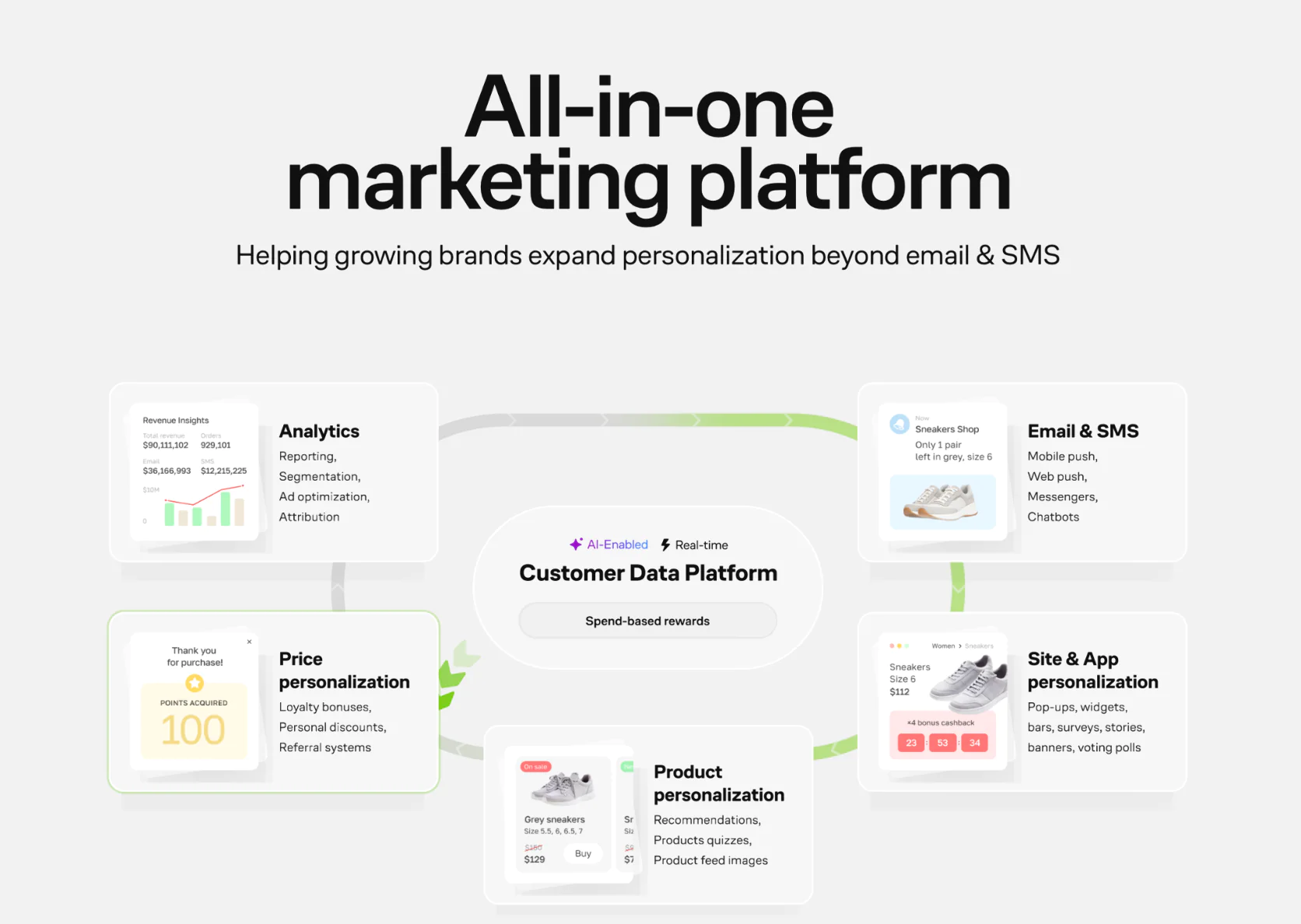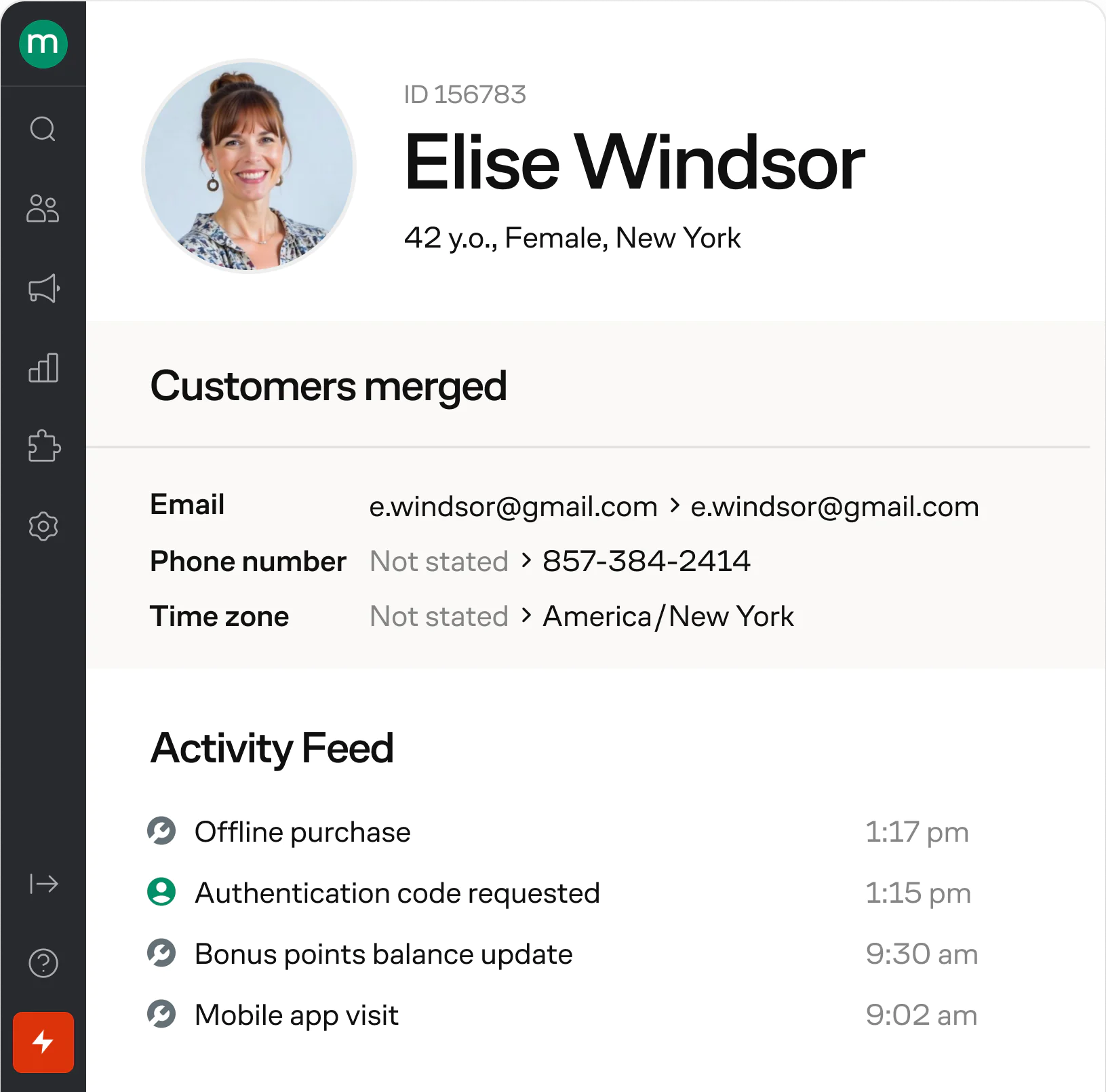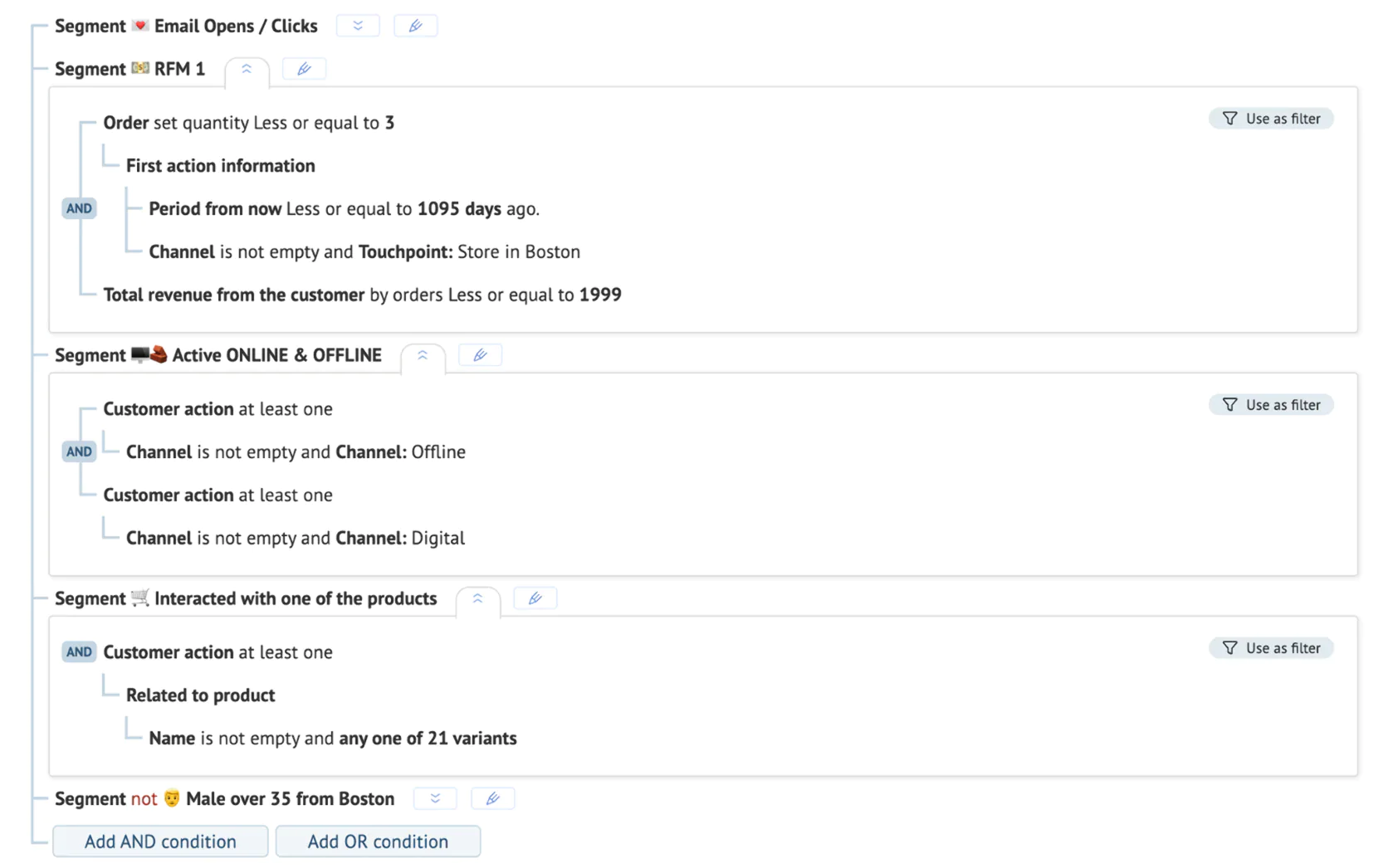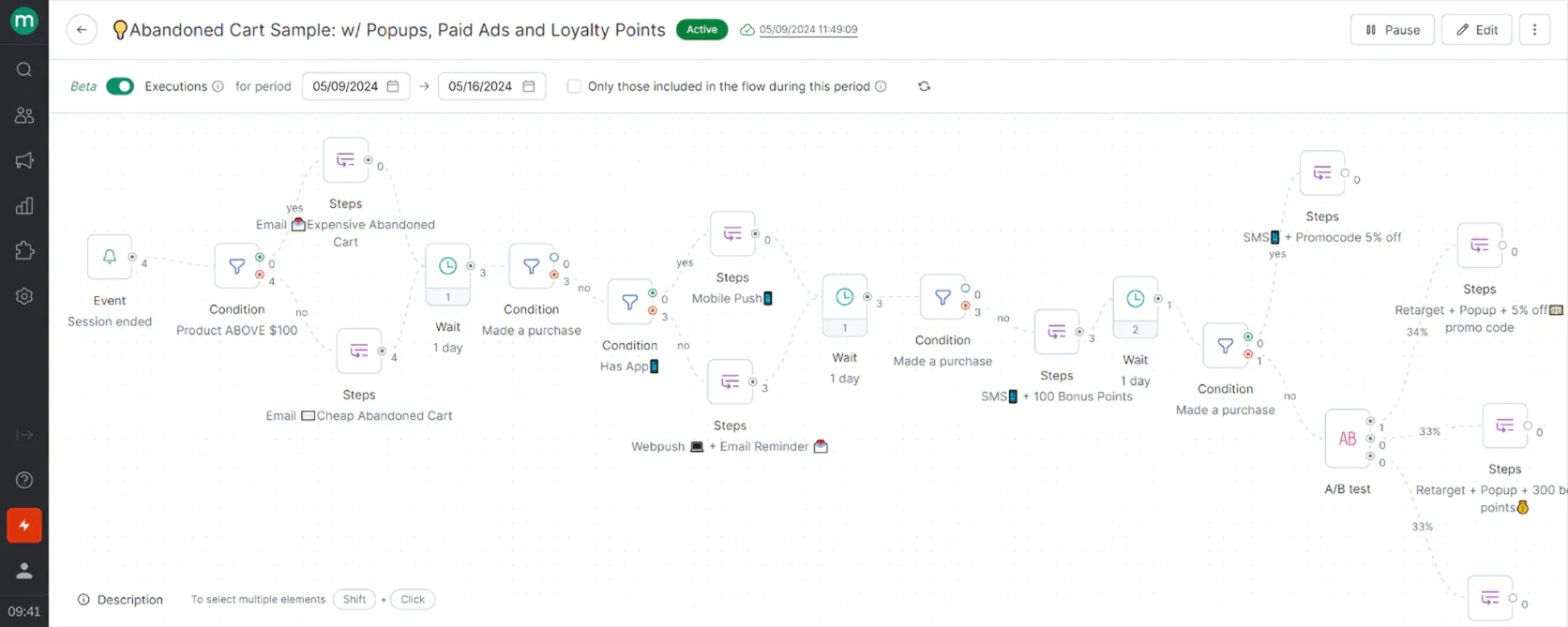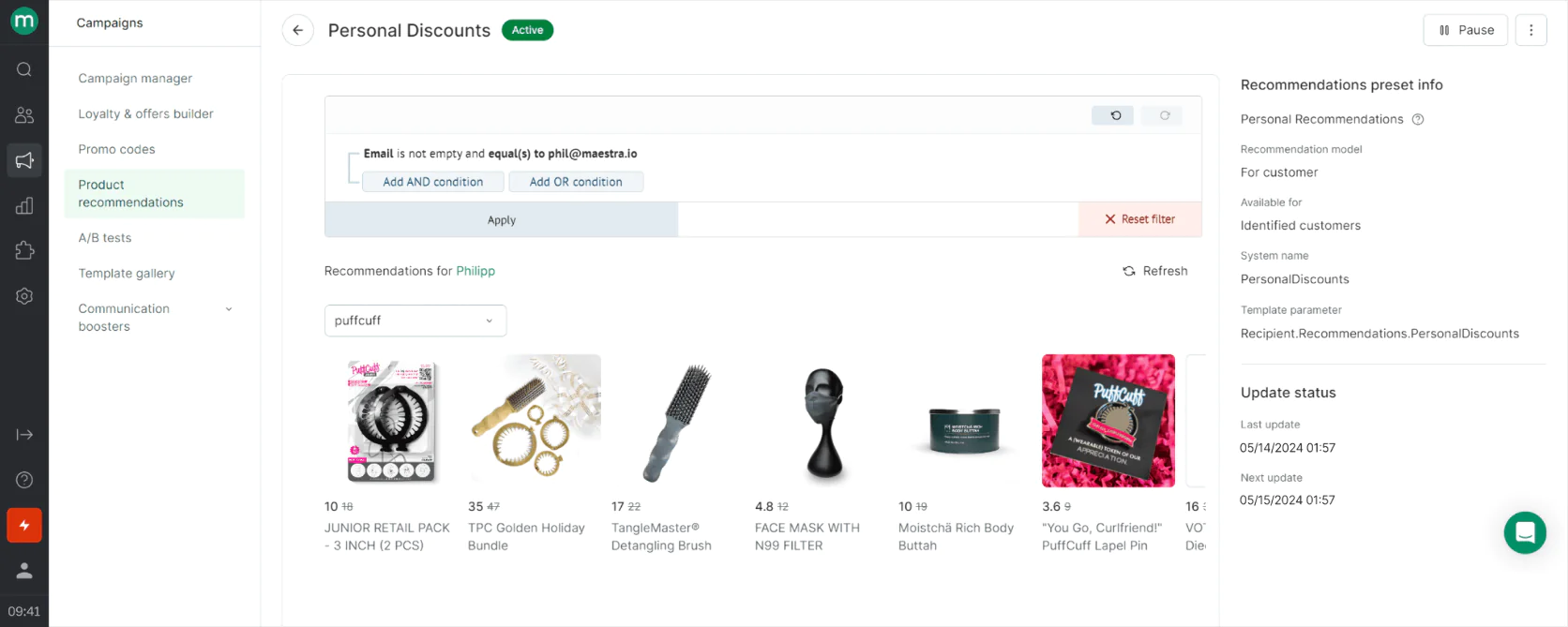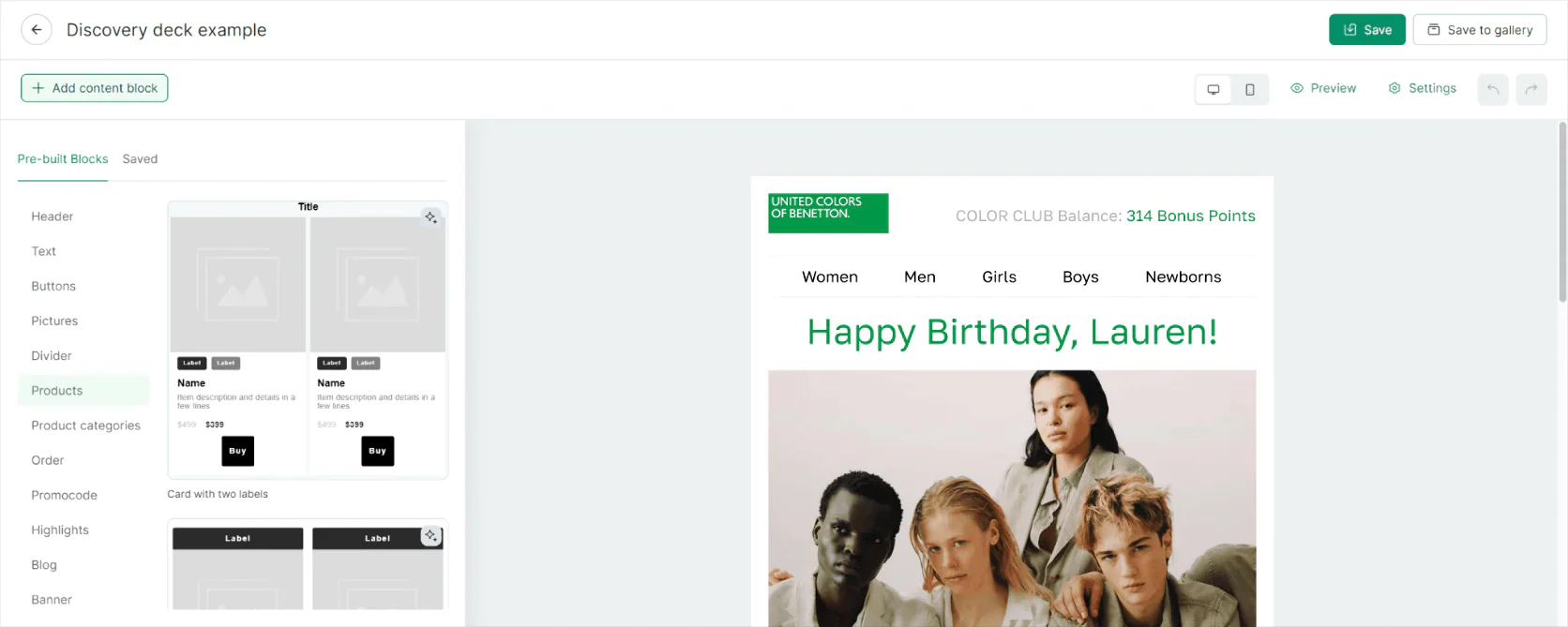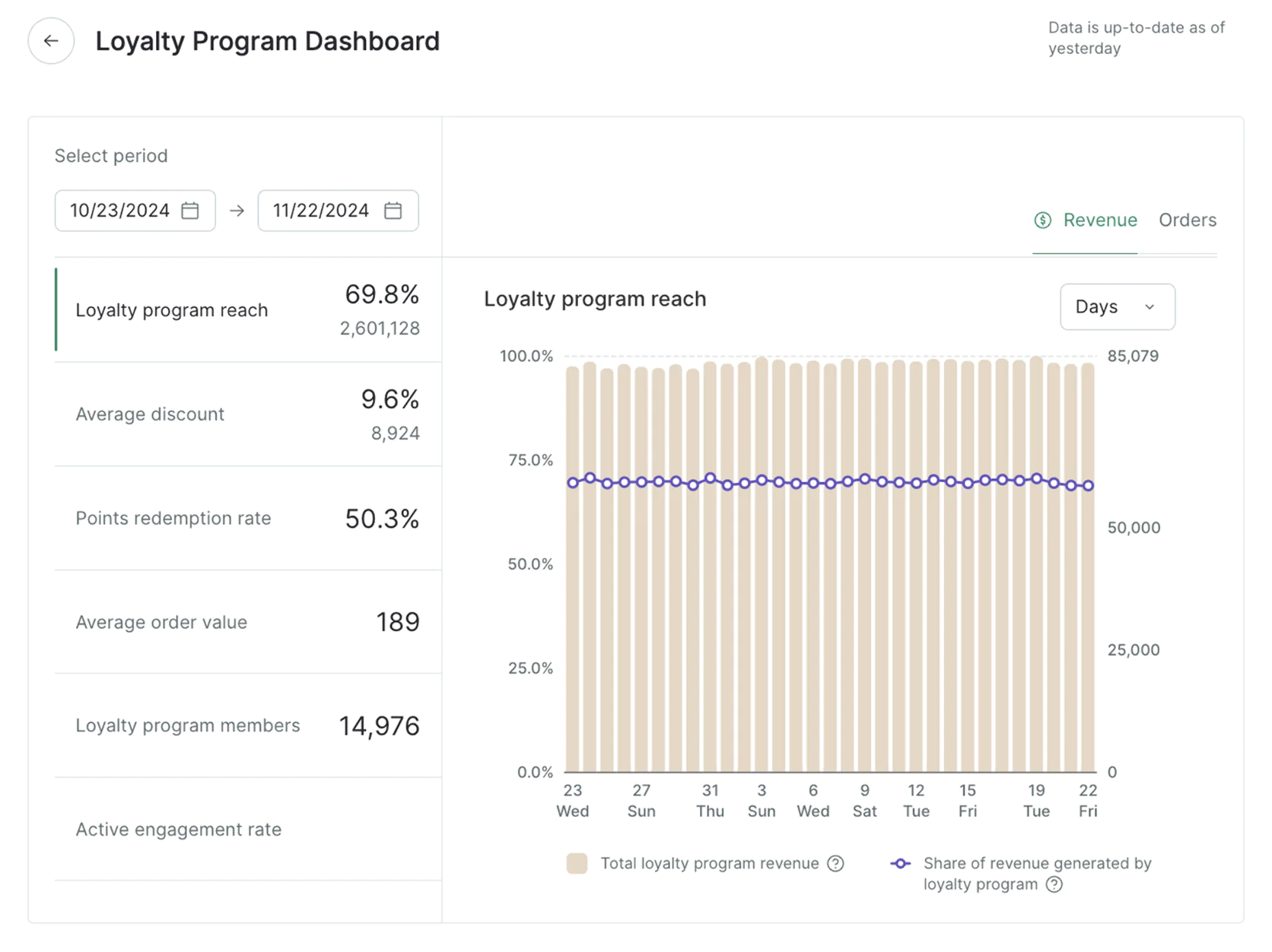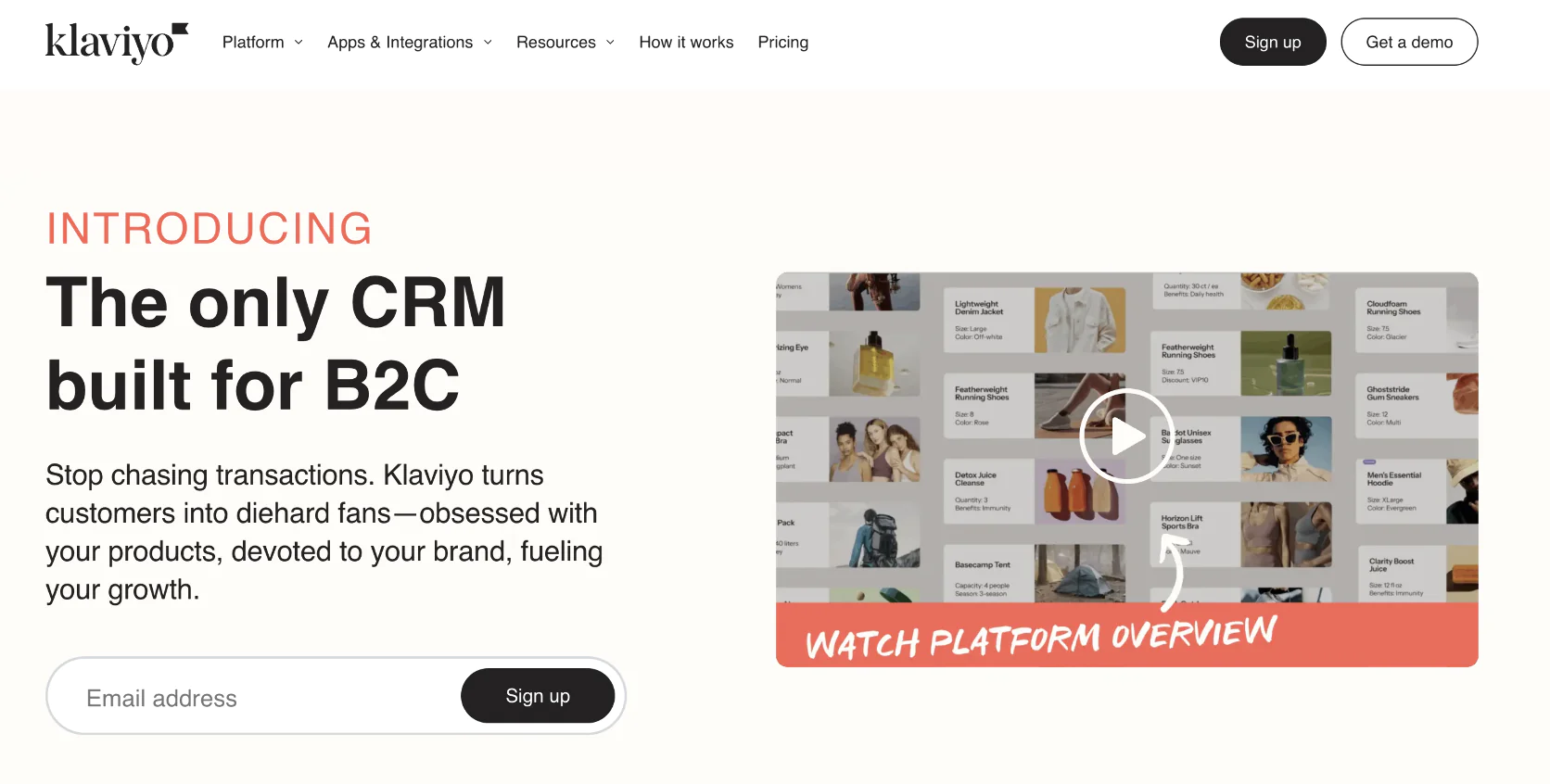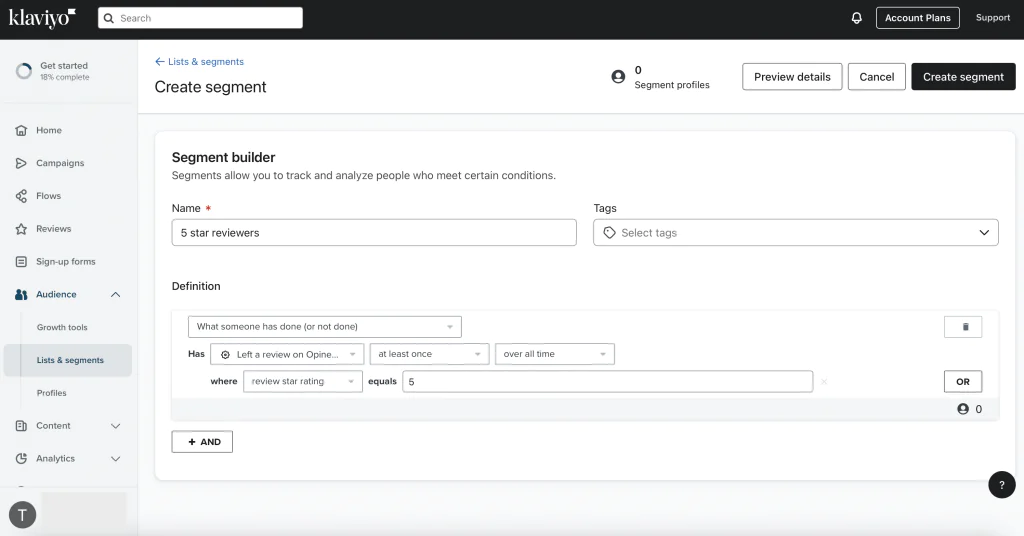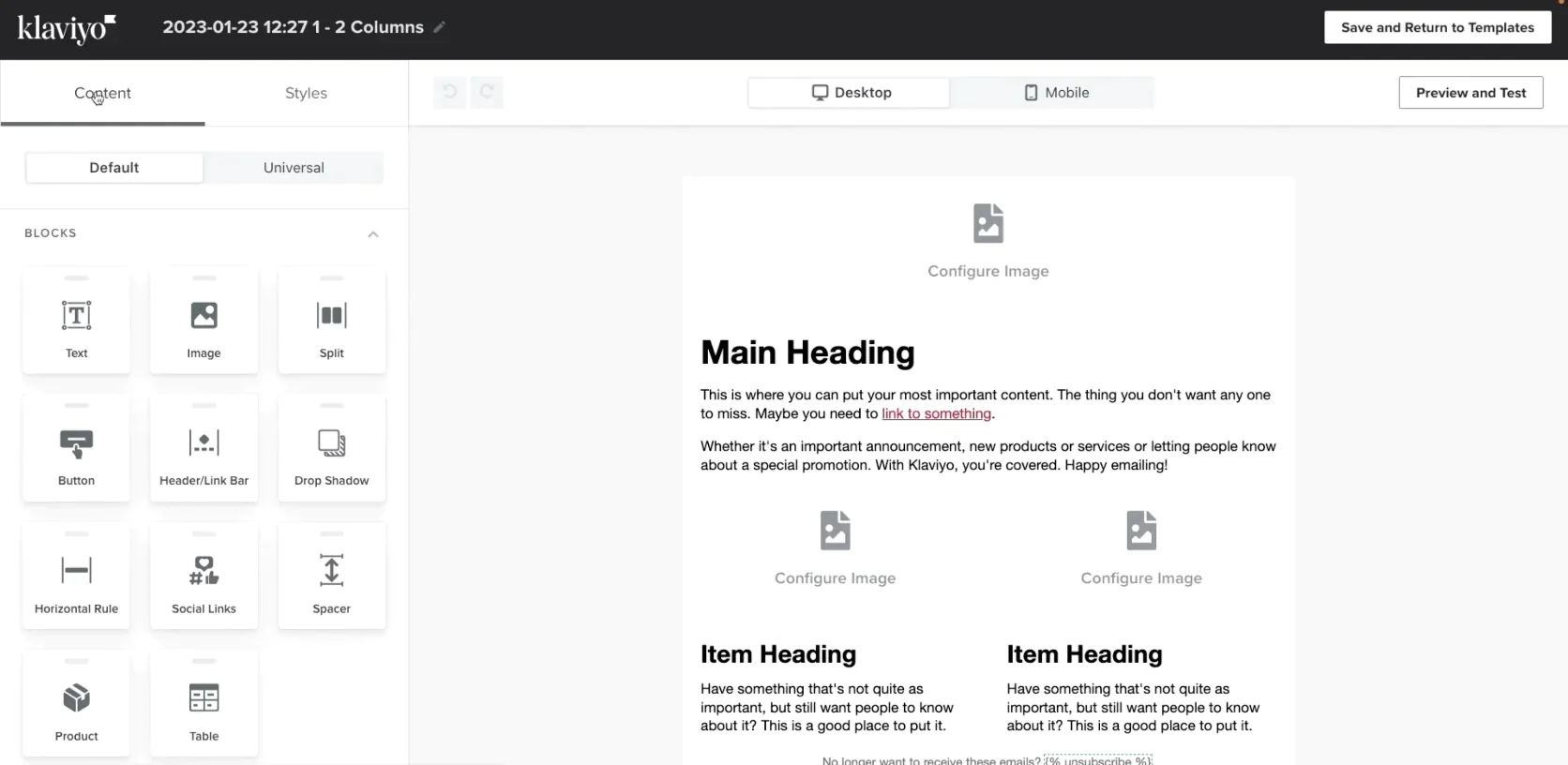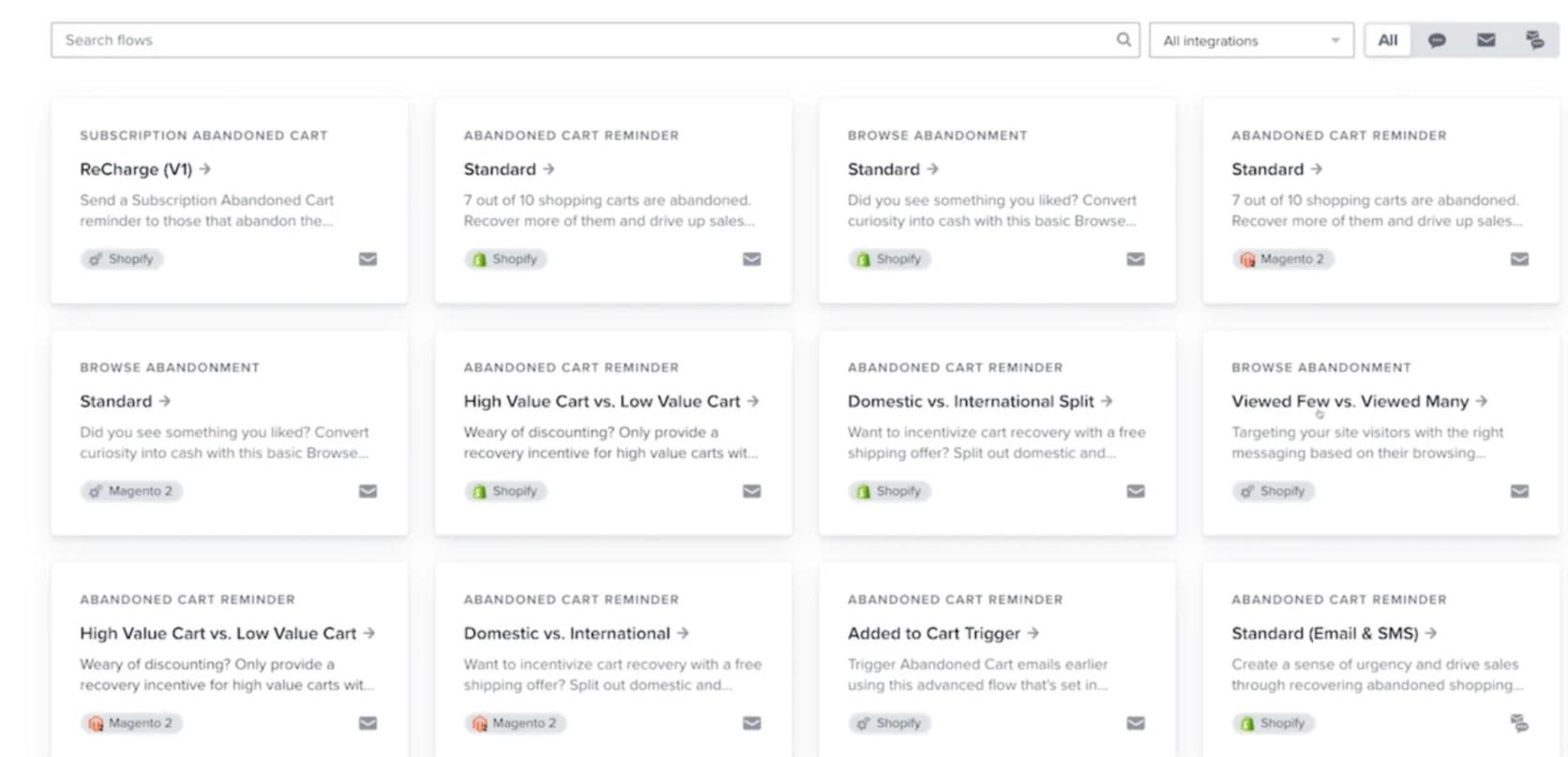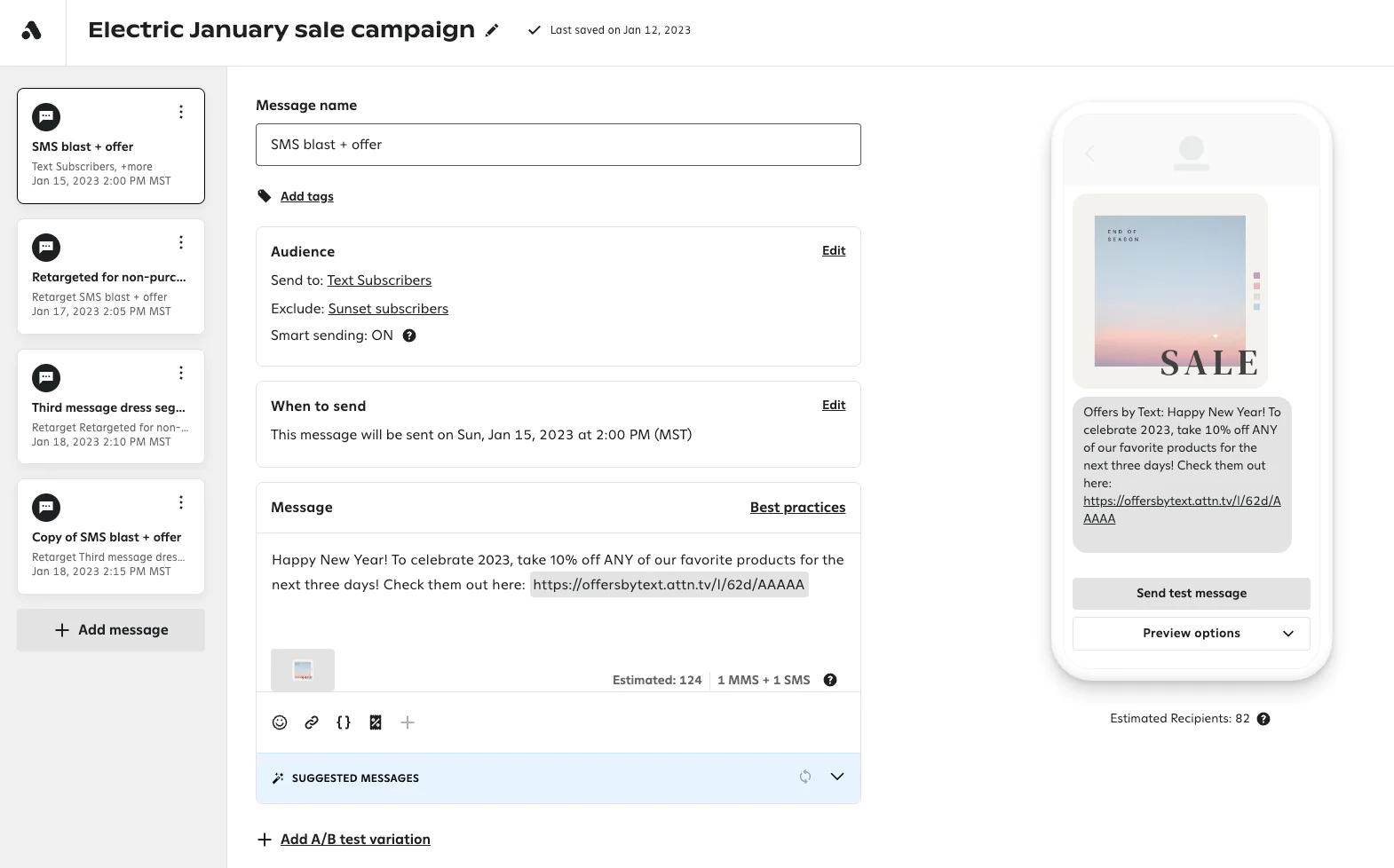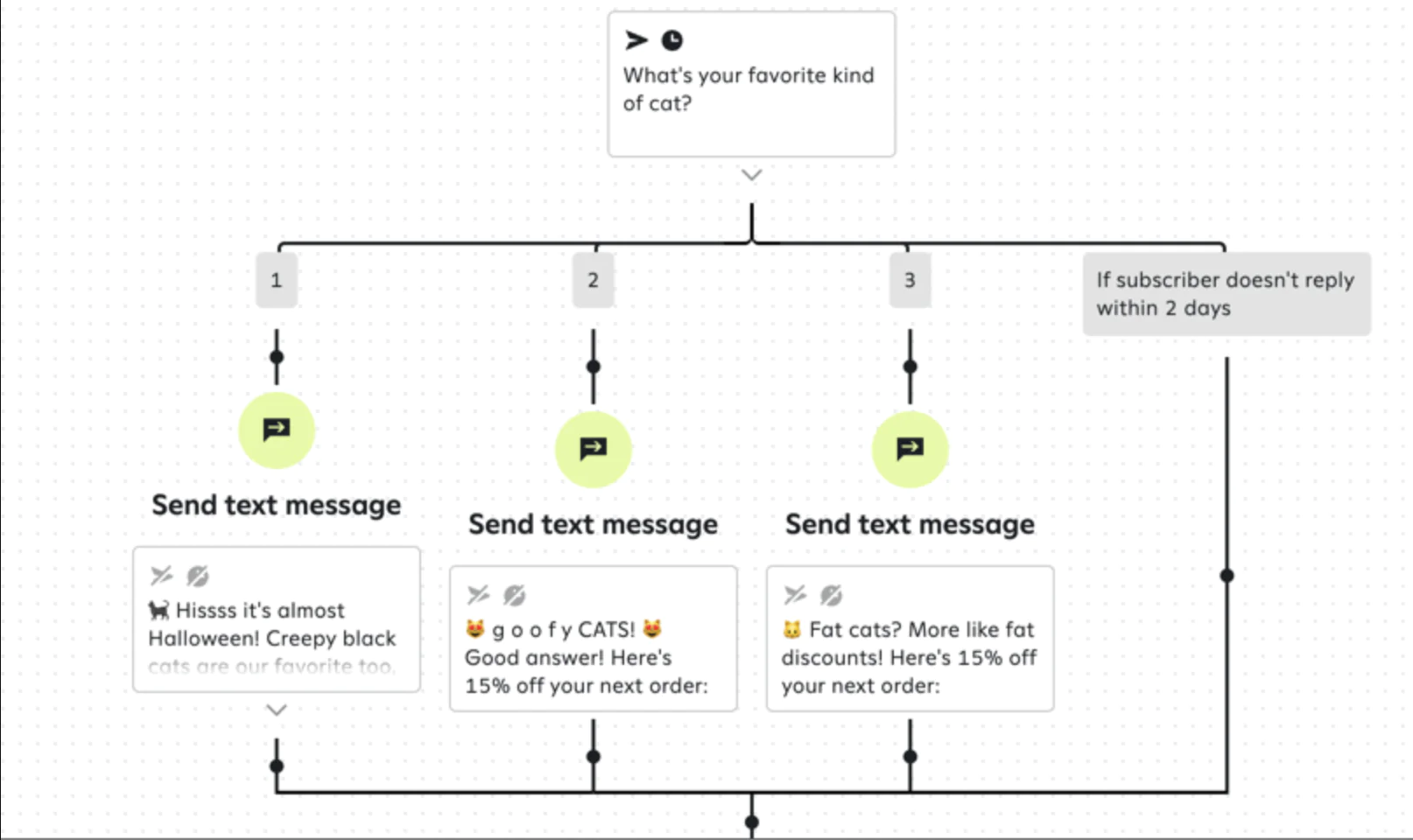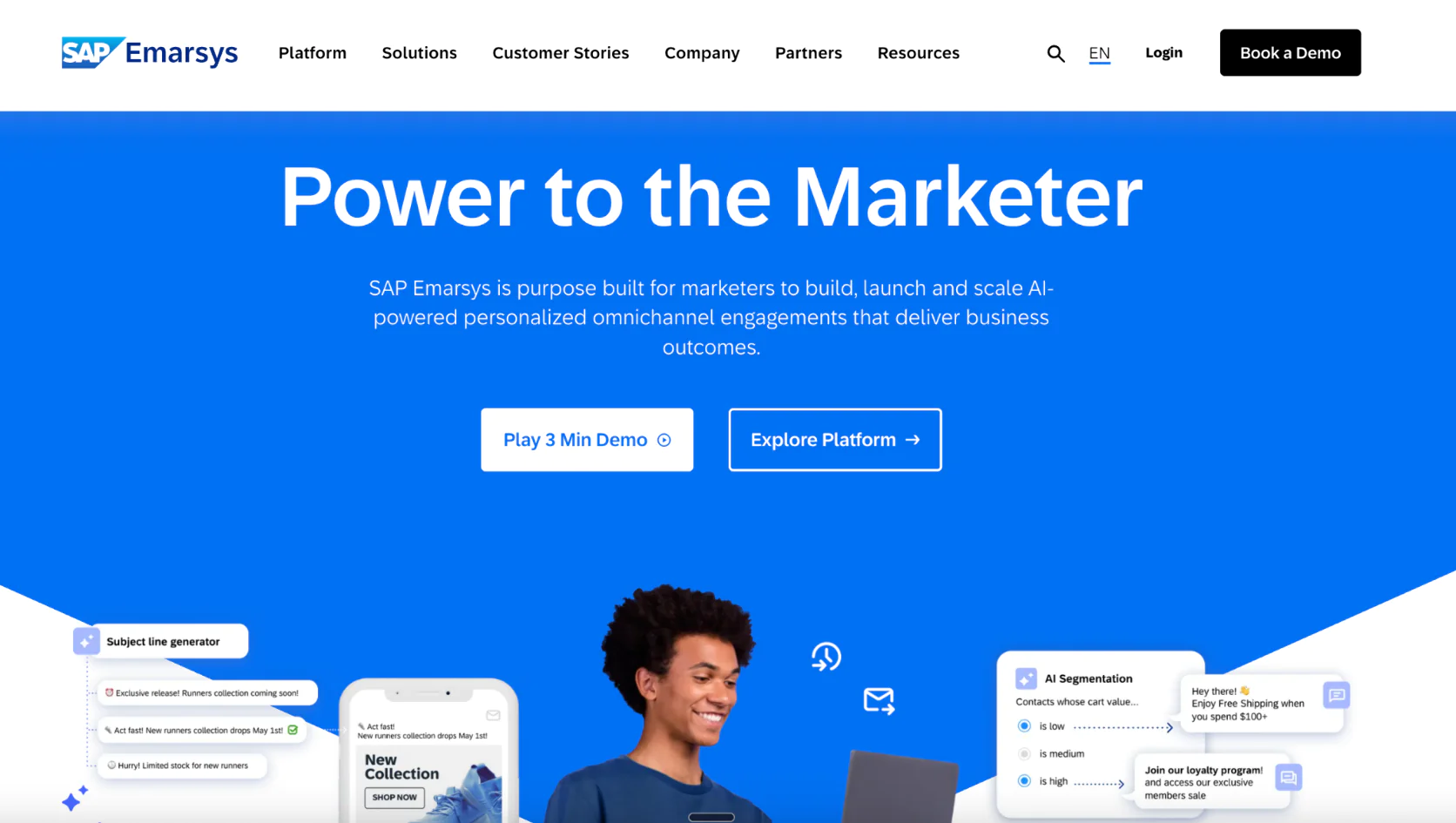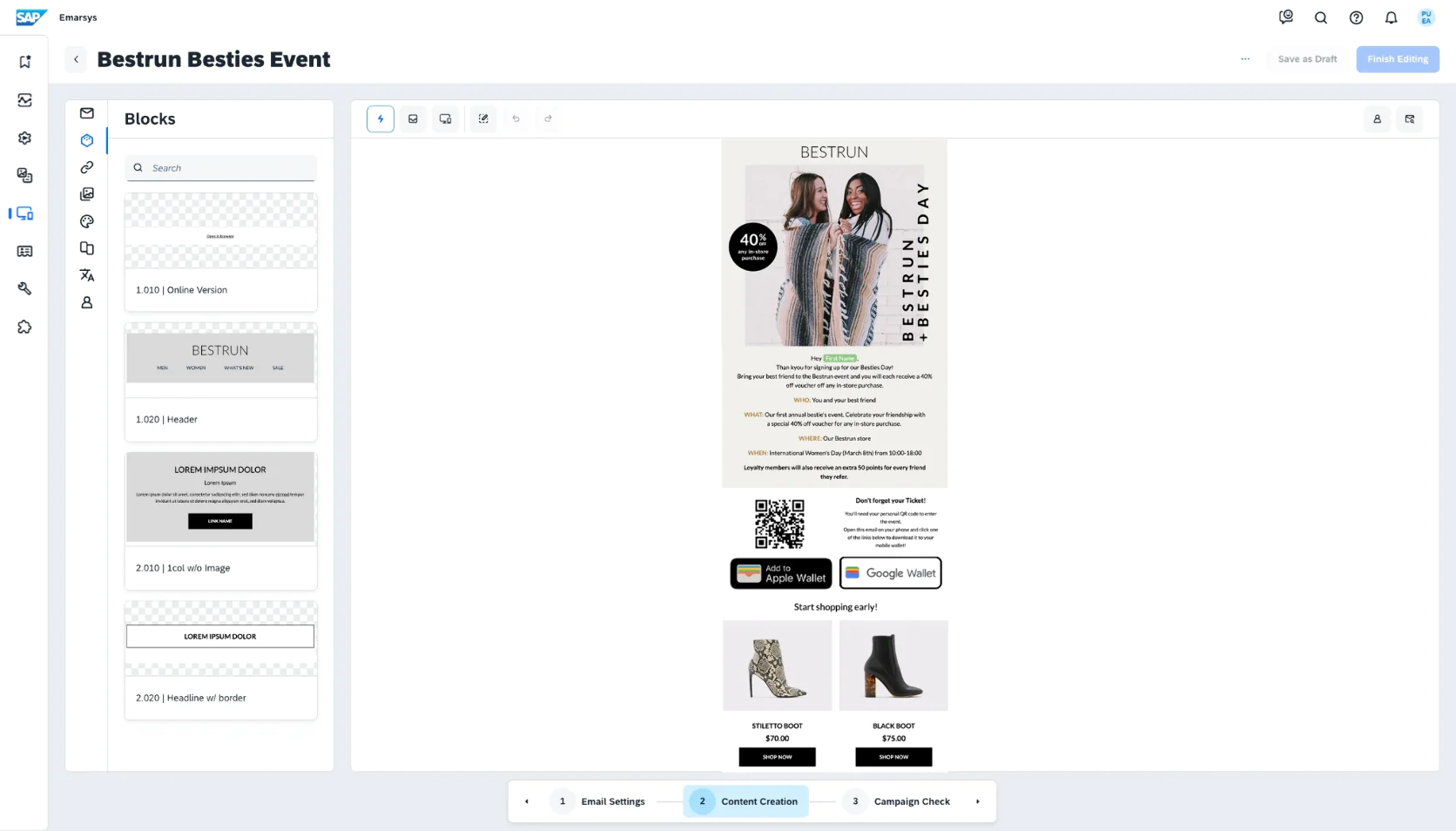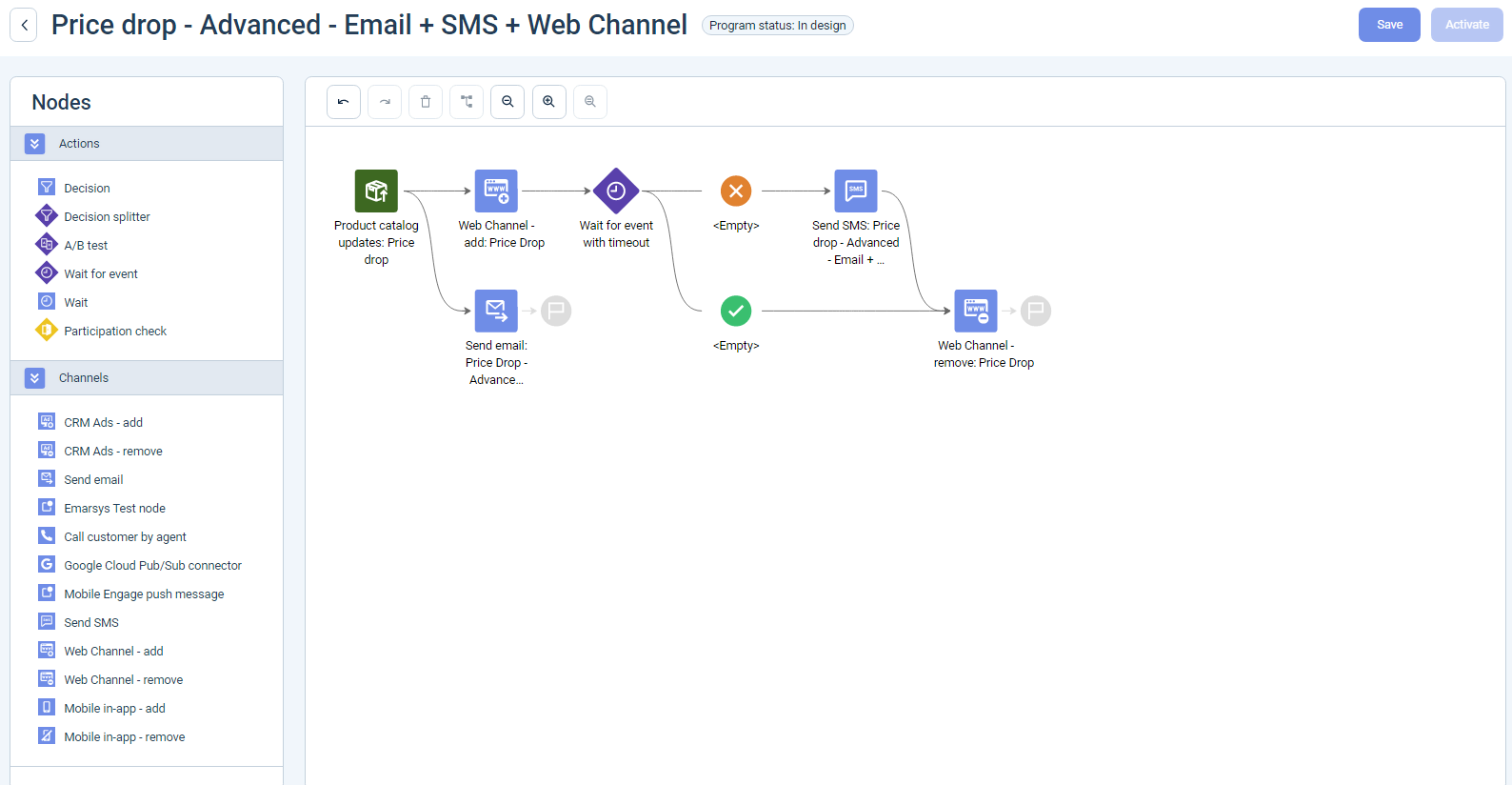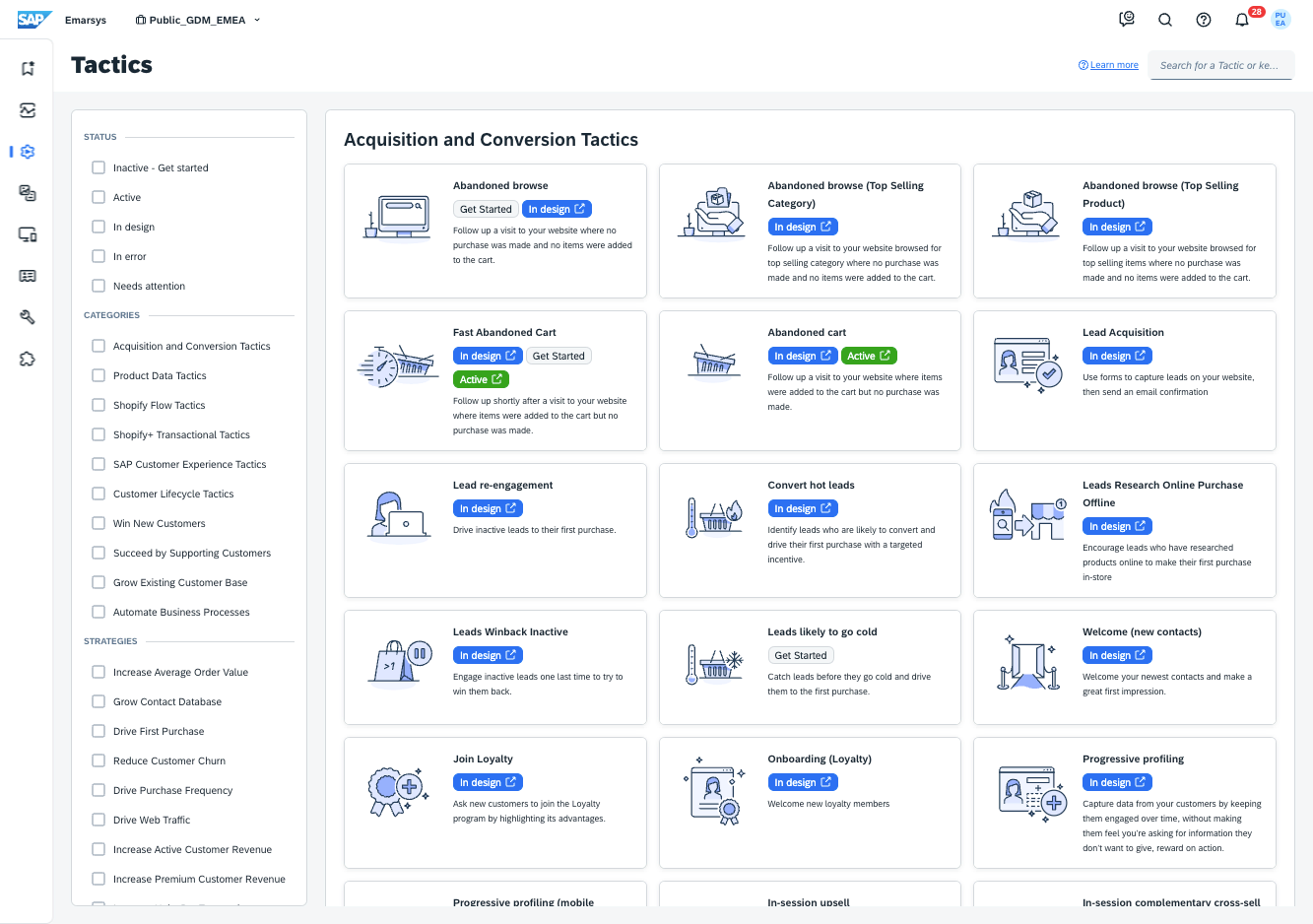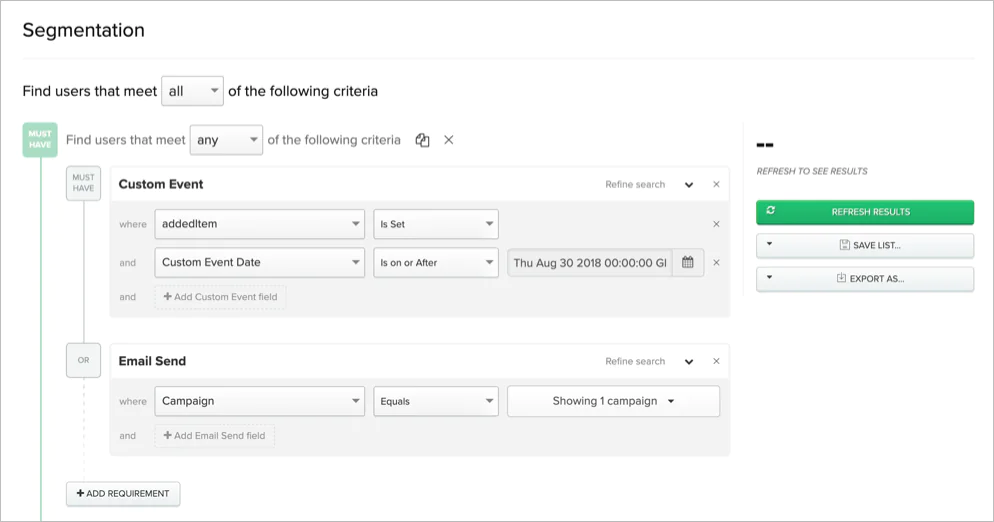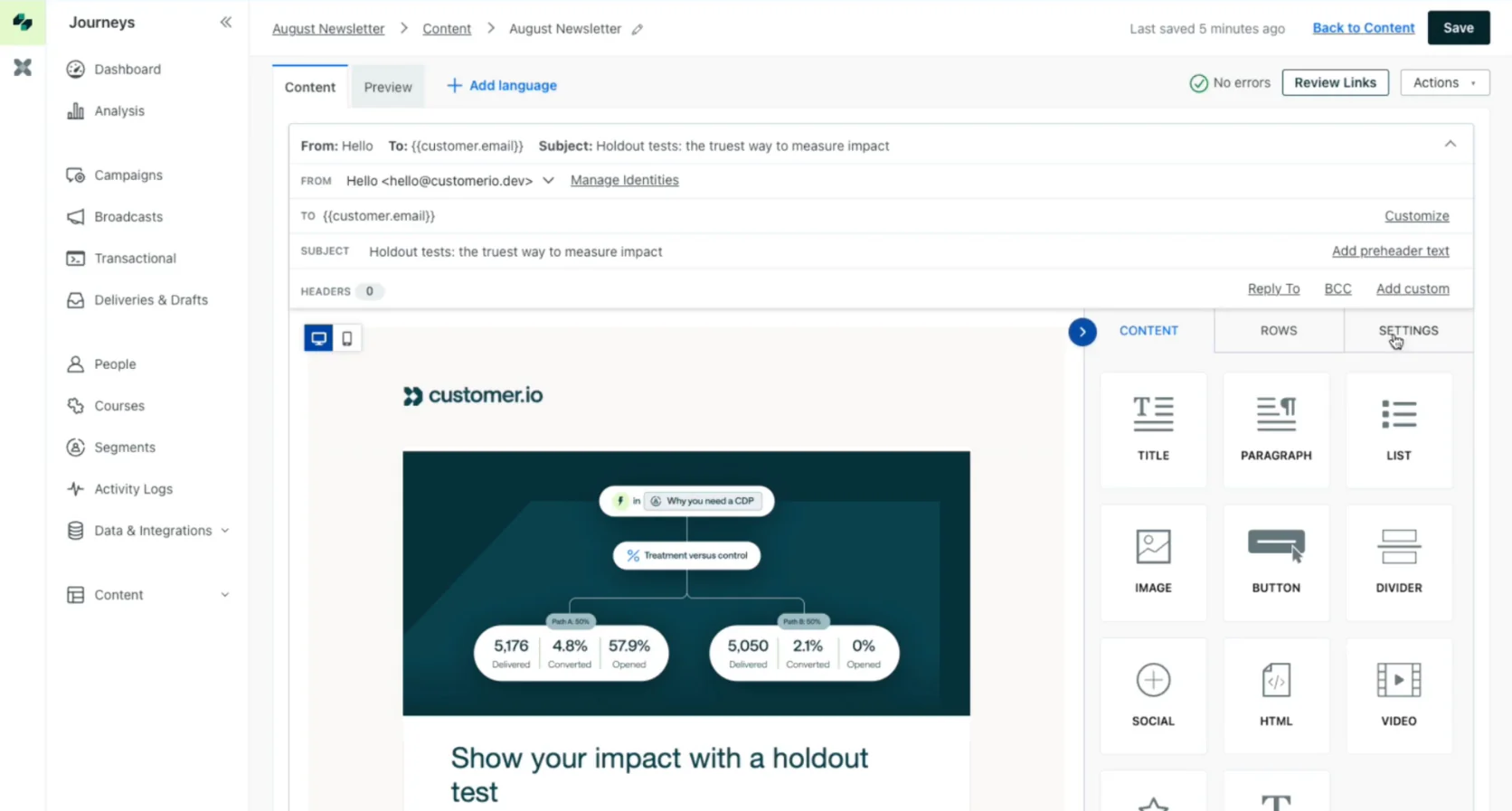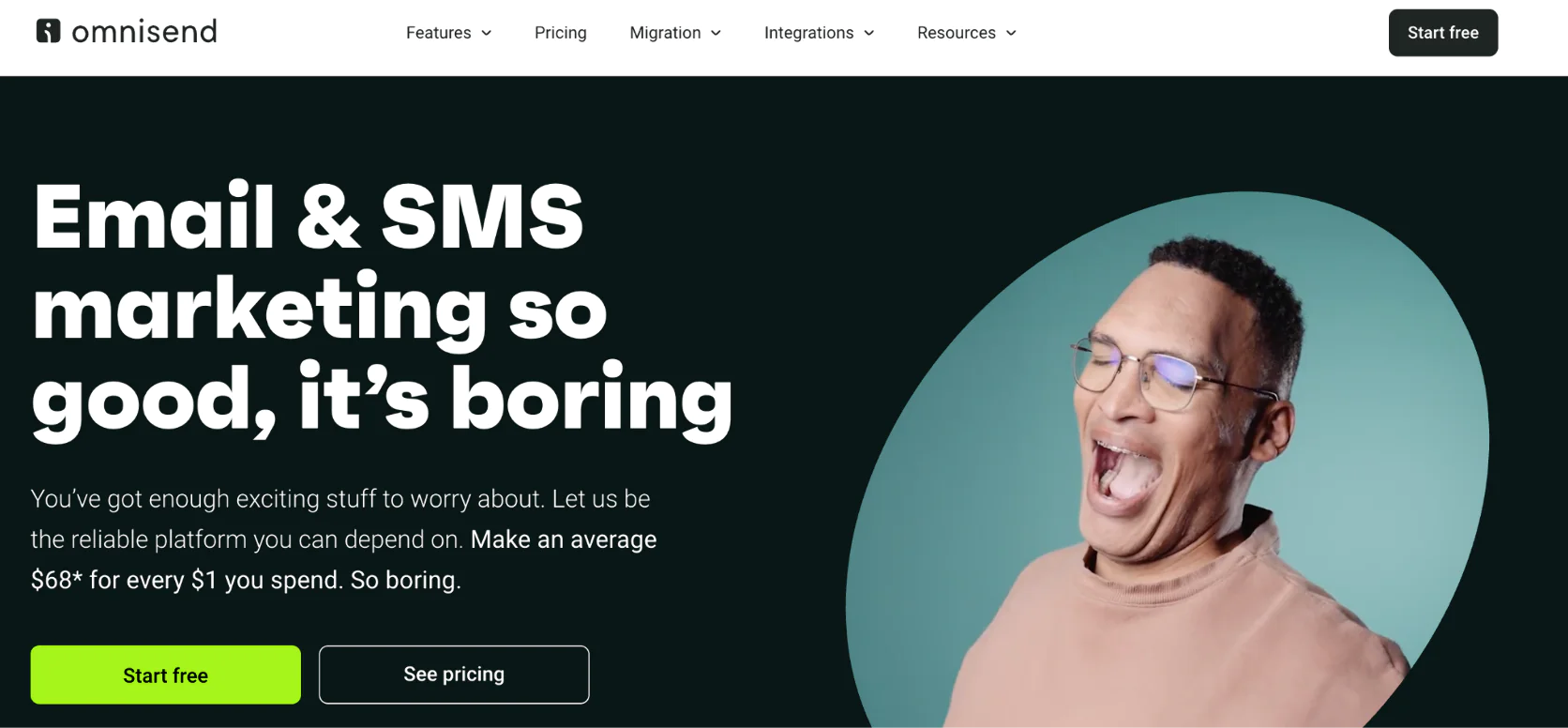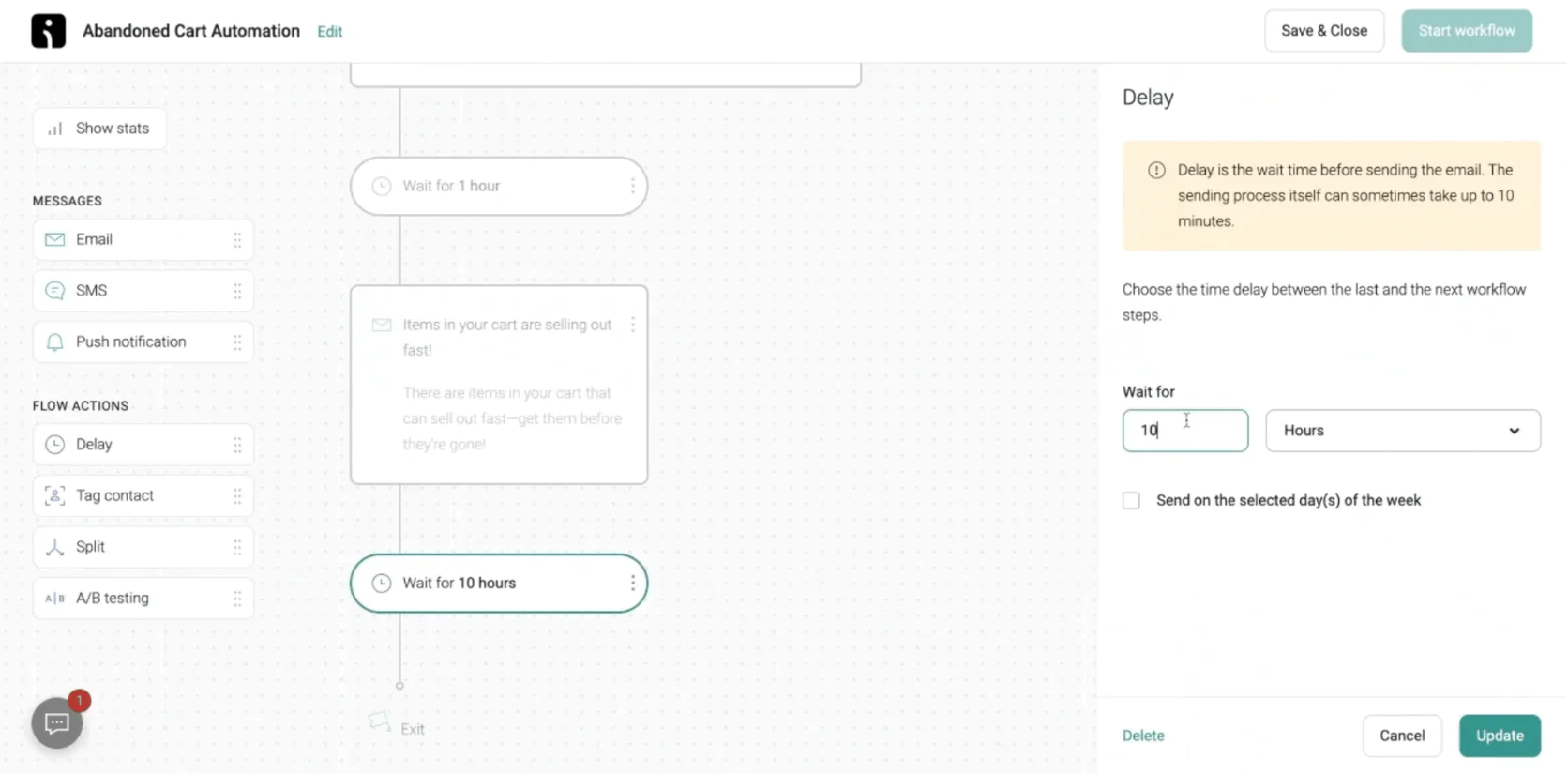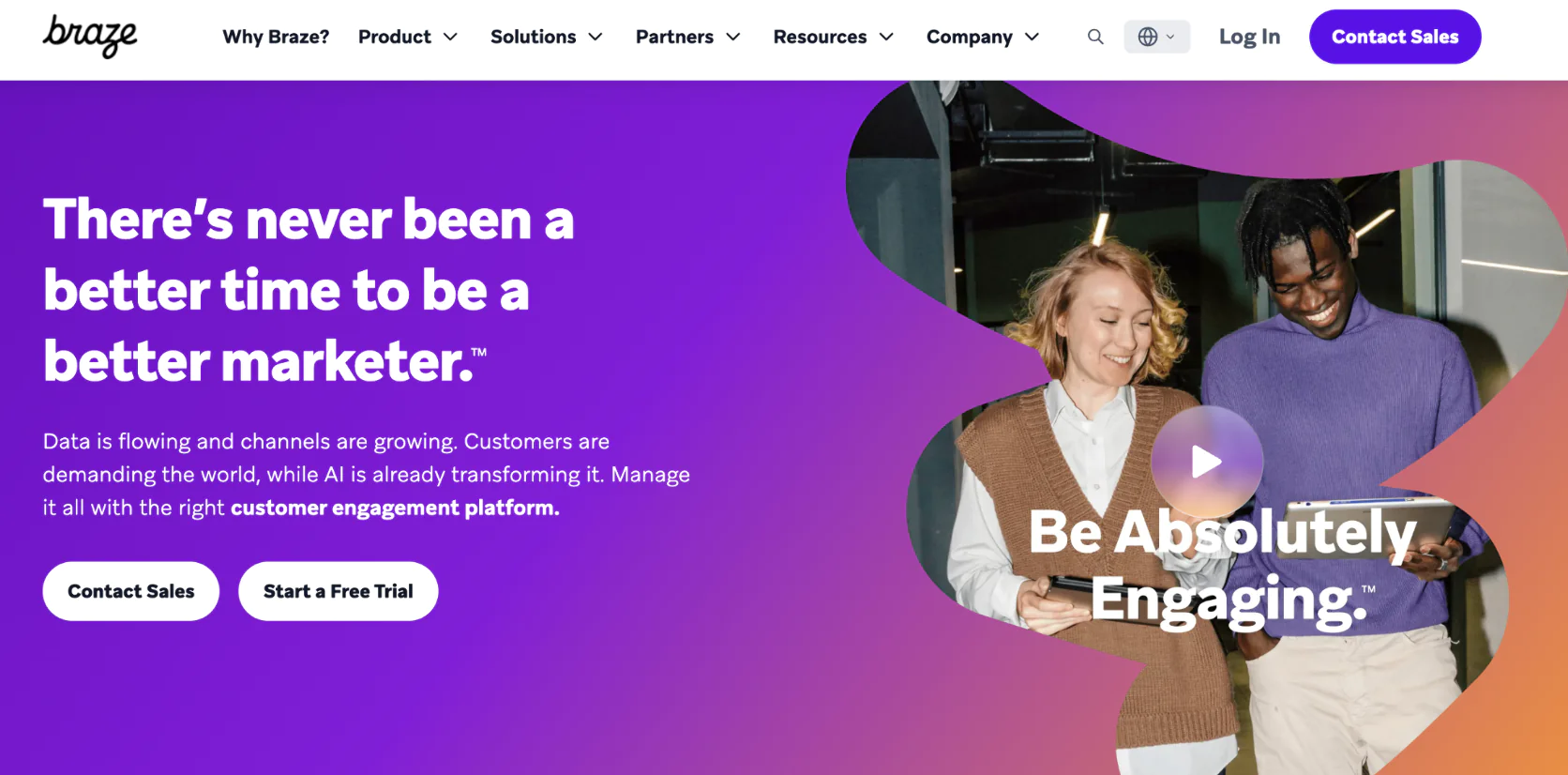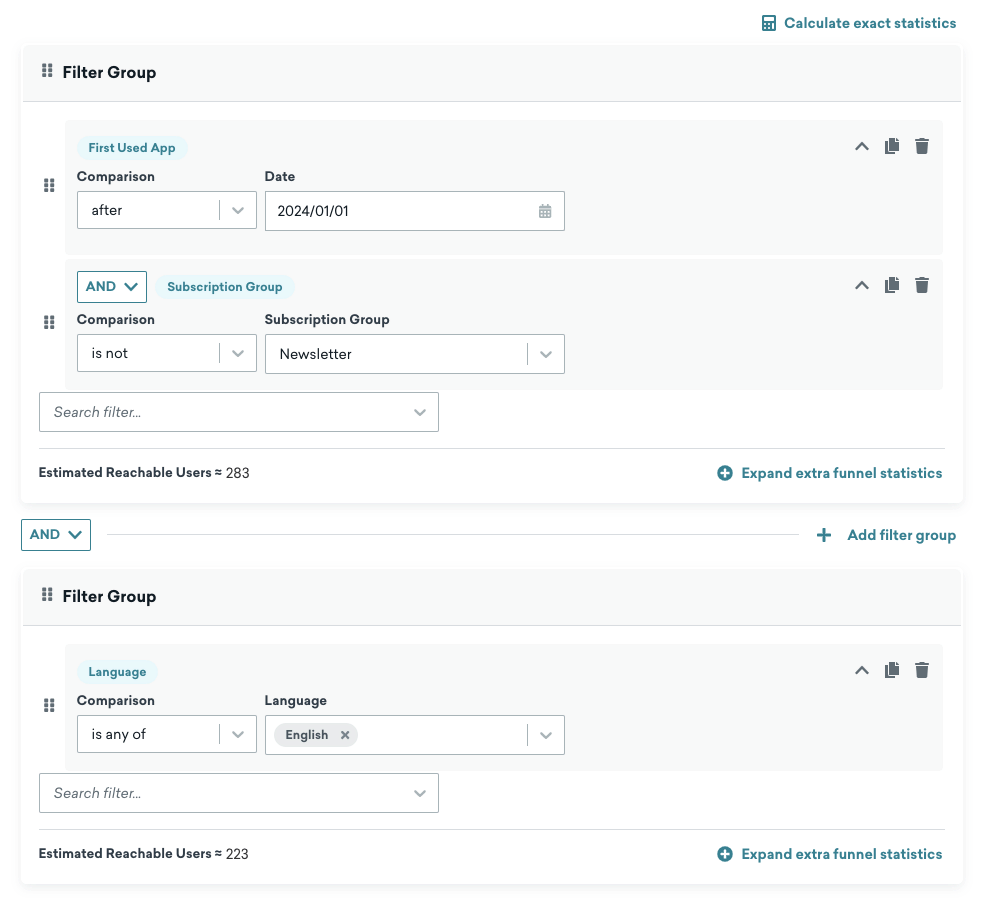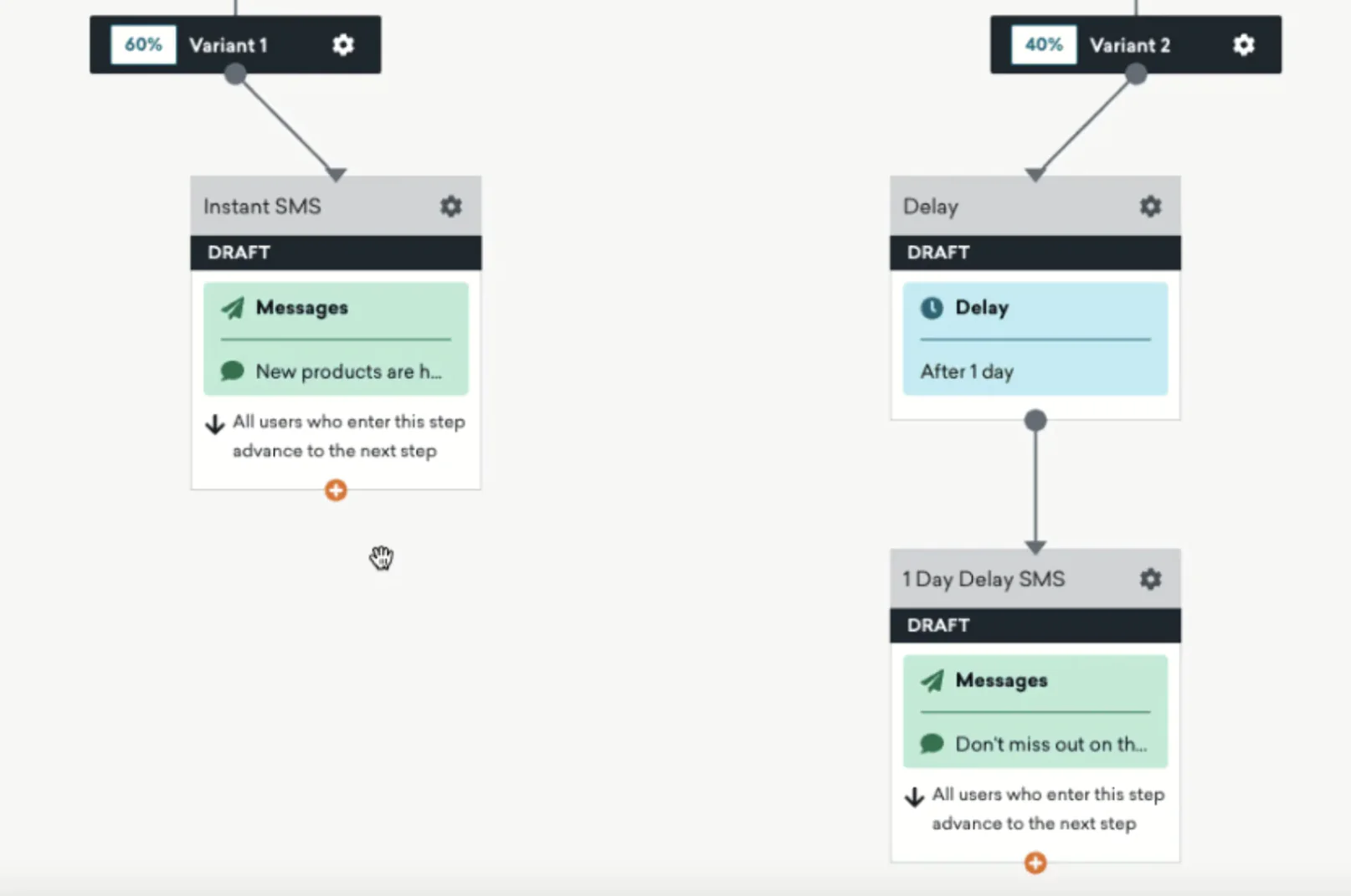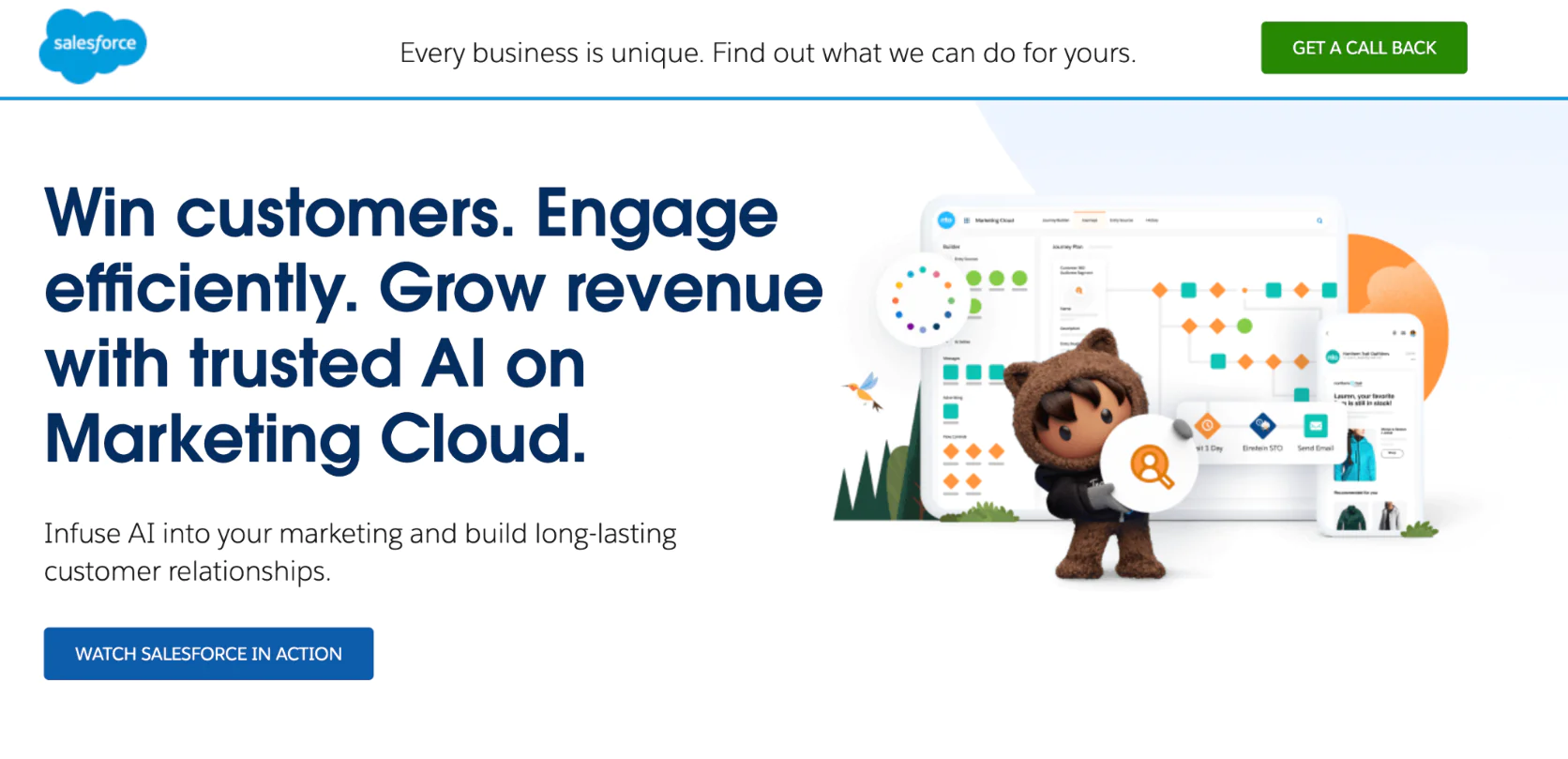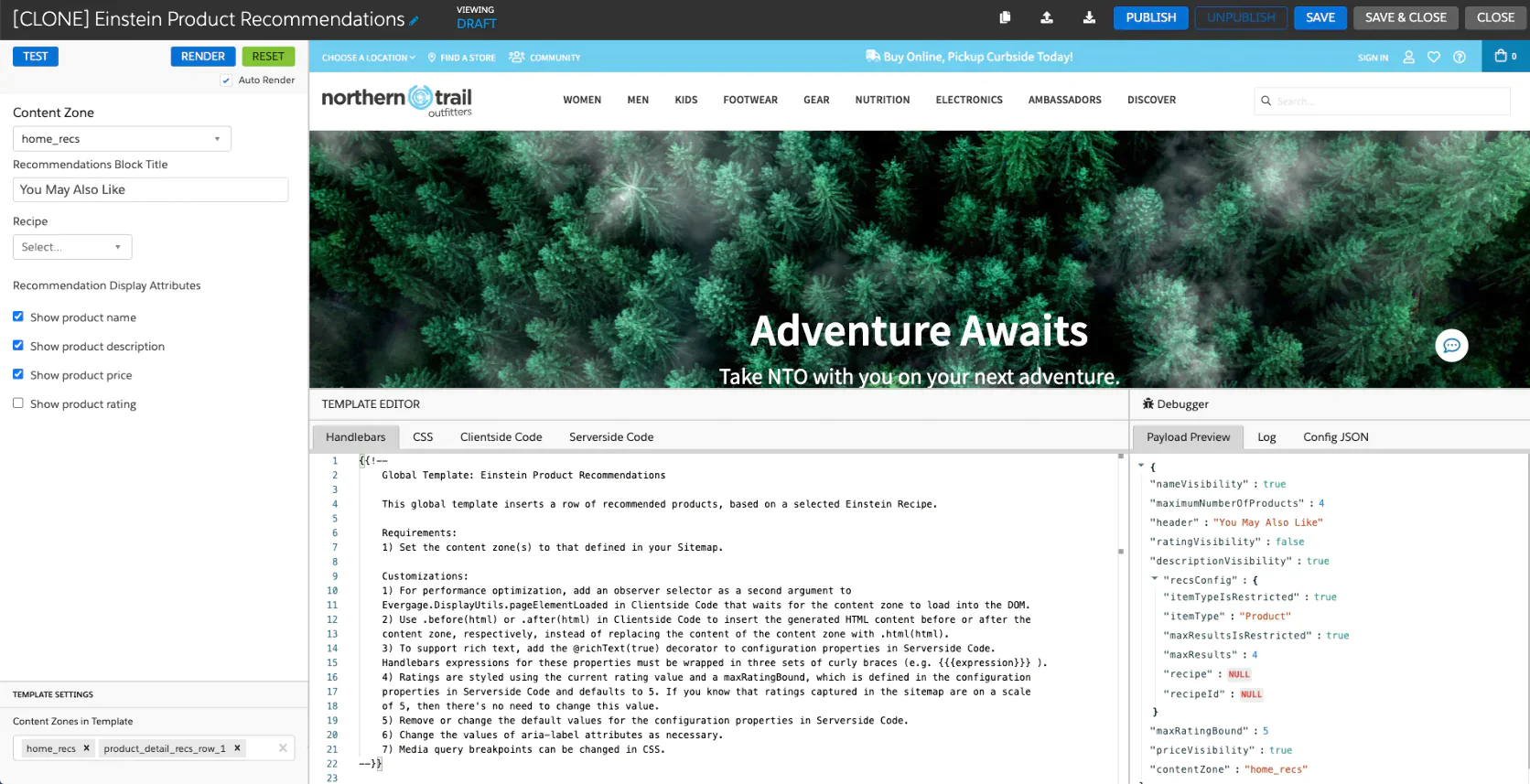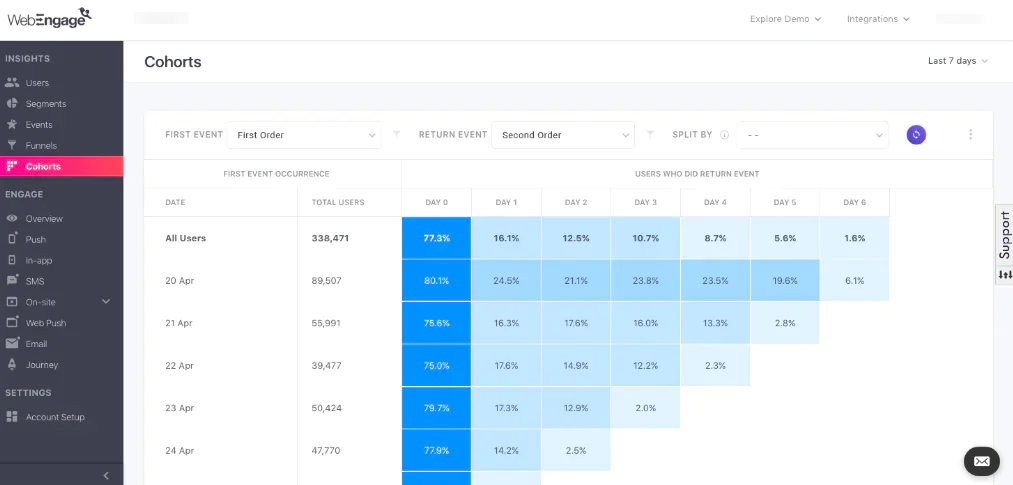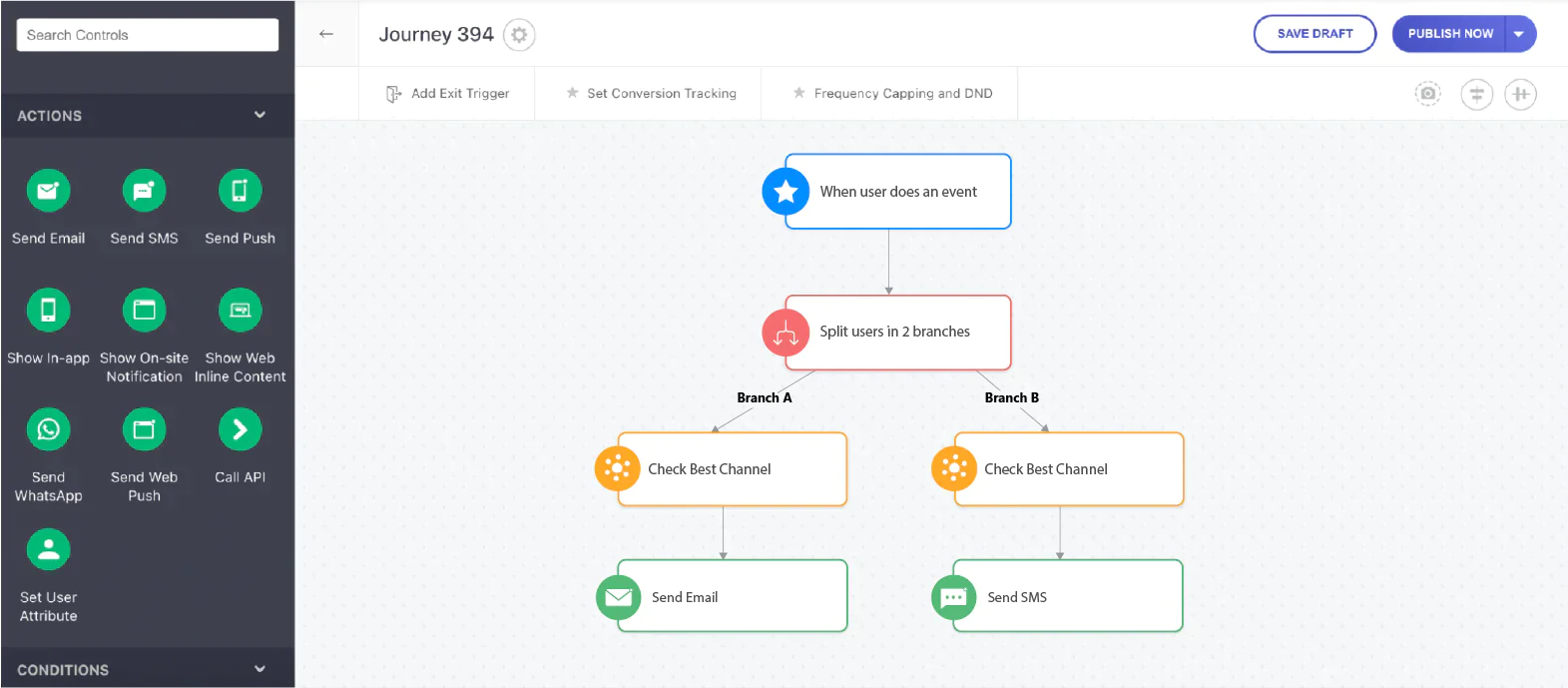9 Email Marketing Automation Tools That Boost E-commerce Revenue in 2025
Email marketing automation stands out as one of the most powerful strategies for boosting revenue in e-commerce businesses throughout 2025. The stats are undeniable: automated email campaigns outperform other digital marketing channels.
Picking the right email marketing automation software can feel overwhelming. The market has dozens of platforms, and each comes with its own strengths and limitations. The best tools do much more than schedule emails — they offer advanced segmentation, personalization, and omnichannel features that boost conversion rates. Top-performing email marketing services let businesses create customer experiences that adapt to live behaviors, priorities, and purchase patterns.
This piece dives into 9 leading email marketing automation platforms that help boost e-commerce revenue in 2025. We’ll look at everything from sophisticated customer data platforms to AI-powered personalization features. You’ll learn what makes each solution special and find the perfect fit for your business needs.
Maestra
E-commerce, retail, DTC brands
White-glove support with Dedicated Customer Success Manager. Migration assistance, strategic help. Shared Slack channel and calls every week
• All-in-one solution
• Live data processing
• Advanced segmentation
• Built-in loyalty program
• AI-powered product recommendations included
• High-touch service model
• Requires commitment • Better for advanced strategies
Klaviyo
E-commerce and DTC brands
Tiered support based on plan level
• Deep e-commerce integration
• Versatile email templates
• Pre-built automation flows
• Higher pricing for large databases
• Slower support
• Resource-intensive
Attentive
Mid-market to enterprise e-commerce brands
White-glove support with dedicated strategy teams
• Advanced SMS capabilities
• Strategic guidance
• Strong compliance expertise
• Higher cost structure
• Limited email capabilities
• Complex interface
Emarsys
Retail, e-commerce, D2C sectors
Complete implementation support
• Retail-specific templates
• Business outcome focus
• Omnichannel capabilities
• Complex implementation
• Steep learning curve
• Enterprise-level pricing
Iterable
Sophisticated B2C marketing teams
Tiered support with extensive documentation
• User-friendly interface
• Live segmentation
• AI-powered optimization
• Custom enterprise pricing
• No free tier
• Technical expertise needed
Omnisend
Small to mid-sized eCommerce
Chat and email support
• Budget-friendly with free tier
• User-focused interface
• Complete multi-channel tools
• Revenue tracking shows direct ROI
• Simpler segmentation than enterprise options
• Basic personalization
• Simple analytics
Braze
Enterprise-level brands
Dedicated success teams for enterprise clients
• Exceptional scalability
• Superior live capabilities
• Complete Canvas journey builder
• Strong mobile-first approach
• Much implementation complexity
• Higher price point
• Steeper learning curve
• Premium support costs extra
Salesforce Marketing Cloud
Large multi-brand corporations
Tiered support with optional dedicated managers
• Market-leading capabilities
• Natural CRM integration
• Enterprise-grade security
• Complete reporting options
• High prices
• Complex implementation
• Hard to learn
• Often needs consultants
WebEngage
Mid-sized companies
Tiered support system
• Better pricing than enterprise alternatives
• On-site engagement tools
• Complete omnichannel capabilities
• Quick implementation
• Not as specialized for retail
• Fewer AI capabilities
• Support varies by tier
Maestra stands as a complete solution that helps brands maximize customer participation across multiple channels. The platform combines evidence-based marketing with individual-specific experiences that appeal to modern consumers, all aimed at generating revenue.
Best for: e-commerce, retail, and DTC brands that want to drive revenue through individual-specific marketing approaches. The platform provides specialized tools to create sophisticated customer journeys. Brands that don't deal very well with fragmented tools or have limited personalization options will find Maestra beneficial, especially those who run online + offline stores or multiple brands.
Maestra CDP and Segmentation
The platform's core strength lies in its immediate Customer Data Platform (
CDP) that updates user profiles with each interaction. The system records data from clicks, purchases, and product views.
Maestra's segmentation is real-time. It refreshes segments right away without the delays you see in other platforms. Marketers can create precise segments – to cite an instance, "VIP customers in New York browsing shoes within the last 24 hours" – and target them right away.
On top of that, Maestra supports nested segments and computed fields. Brands can identify customer’s favorite color and recommend products in this color, which leads to better campaign targeting and resource allocation.
Omnichannel Communication with Maestra
Maestra's journey orchestration tools enable brands to design behavior-driven customer experiences across multiple channels through an intuitive drag-and-drop interface builder. The platform creates workflows that automatically adapt to customer actions, seamlessly transitioning customers between different journey stages based on their real-time behaviors.
Maestra supports unified messaging across all major customer touchpoints:
Email marketing with dynamic content personalization and automated sequences
SMS, MMS and messengers for immediate engagement and time-sensitive offers
Push notifications for mobile app users with location-based triggers
Web push notifications for website visitors even after they leave
In-app messaging for mobile applications with contextual prompts
On-site personalization with dynamic web content, banners, and product recommendations
Paid media integration for coordinated advertising across social platforms and display networks
POS messaging and self-service terminal displays for personalized add-on offers
For example, a customer browses sneakers on his phone during lunch, receives a personalized email that evening, sees retargeted ads on Instagram the next day, gets an SMS discount offer, and when he visits the store, the POS system recognizes him and applies his online cart discount automatically. Maestra's identity resolution tracks them across all devices and channels, ensuring their journey feels seamless whether they’re online or offline.
Maestra’s flow example: abandoned card flow with emails, mobile and web pushes, pop-ups, paid ads and loyalty points
Maestra's Customer Data Platform provides sophisticated identity resolution capabilities that unify customer interactions across devices and touchpoints. Cross-device identification ensures that a customer's journey remains consistent regardless of how they access your brand. Messages stay consistent across all channels, preventing the disconnected experiences that occur with separate tools, creating a cohesive customer experience where each touchpoint builds upon previous interactions.
Maestra Personalization Capabilities
Maestra makes use of sophisticated algorithms to deliver tailored experiences.
The system creates product recommendations based on each person's browsing and purchase history, which increases relevance and conversion chances.
Personal product recommendations in Maestra
The platform adapts images, offers, and subject lines to each recipient, going beyond simple product suggestions.
Maestra’s visual email composer
The system delivers communications at times recipients are most likely to respond. Personalized content combined with strategic timing creates campaigns that appeal more to target audiences.
Maestra's built-in loyalty and promotions engine supports point-based programs, VIP tiers, and referral systems. Brands can automate loyalty rewards and unique coupons linked to campaigns – all in one platform that manages their communications.
Maestra’s Loyalty Program dashboard
Maestra's high-touch support model sets it apart. Each client works with a dedicated Customer Success Manager who helps with onboarding, data migration, campaign setup, and strategy development. The platform provides clients with a strategic partner who knows their business needs, unlike platforms that offer support through generic help desks.
This support structure works as an extension of the client's marketing team, offering guidance and expertise without adding headcount. Brands with limited technical resources find this hands-on help valuable during setup and optimization.
All-encompassing approach that eliminates the need for multiple disconnected tools
Higher base price than entry-level solutions (though has more capabilities)
Purpose-built for commerce with features like cart abandonment flows, product catalog syncing, and RFM segmentation
Best suited for brands ready to implement advanced marketing strategies rather than simple email campaigns
High-touch service model with dedicated strategy support
Immediate data processing that enables instant campaign triggering
All-inclusive pricing model with complete feature access
Maestra functions as a complete marketing ecosystem rather than just another communication tool. E-commerce brands looking to unite their marketing stack while gaining advanced capabilities will find Maestra a compelling alternative to combining multiple specialized platforms.
The platform's united approach to customer data, communications, loyalty, and personalization solves the fragmentation issues common in modern marketing technology stacks.
Klaviyo has grown into a powerful marketing automation platform that specifically helps online retailers boost customer engagement and drive sales. This 12-year-old platform converts customer data into revenue-generating campaigns with its e-commerce focus.
Best for: e-commerce and Direct-to-Consumer (DTC) brands that want to use their customer data effectively. Online stores running on popular platforms like Shopify, WooCommerce, and BigCommerce widely adopt this platform. The company started with email and SMS marketing but now includes push notifications and in-app messaging, which makes it more versatile for online retailers.
Klaviyo distinguishes itself through its deep e-commerce integration and easy-to-use interface that speaks the language of commerce rather than technical jargon. Retail marketers find the platform particularly useful because it focuses on campaigns, discounts, customers, and products instead of abstract marketing concepts.
Klaviyo CDP and segmentation
Klaviyo’s sophisticated customer segmentation engine drives its effectiveness. Marketers can build detailed
customer segments using rich e-commerce data, which includes shopping behavior, purchase history, and website activity. These segments become the foundation for targeted marketing campaigns across multiple channels.
Creating a segment in Klaviyo
The platform's segment builder helps merchants create precise audience groups based on many variables. Users can target customers who viewed specific products but didn't purchase, shoppers who spent above a certain threshold in the last month, or customers with high predicted lifetime value based on their purchase patterns.
Klaviyo's CDP capabilities include predictive analytics that explain expected customer lifetime value and churn risk assessment. These predictive metrics help marketers focus their efforts on high-value customers or those who might abandon the brand.
Omnichannel Communications with Klaviyo
Klaviyo provides strong multi-channel marketing capabilities that focus on email and SMS while supporting push notifications and in-app messaging.
Klaviyo's journey builder enables the creation of pre-built automation flows such as abandoned cart sequences, welcome series, and post-purchase follow-ups. Each flow can combine multiple channels so marketers can design detailed customer experiences. An abandoned cart series might start with an email and follow up with an SMS reminder if the email stays unopened.
Flow templates in Klaviyo
The platform keeps messaging consistent and relevant across channels through its centralized approach to customer data. Klaviyo serves as a central command center that coordinates personalized communication instead of having email and SMS work separately.
Klaviyo Personalization Capabilities
Klaviyo uses its customer data to deliver personalized marketing content. The platform goes beyond simple personalization tags and offers dynamic content that adapts to each customer's behavior and priorities.
The platform's product recommendation engine analyzes purchase history and browsing behavior to suggest relevant products to recipients. Emails or SMS messages can automatically include these recommendations, which increases their relevance and conversion potential.
However, these product recommendations are not available for website personalization or offline touchpoints, unlike Maestra's recommendation system.
Klaviyo provides various support options. Users can access a detailed knowledge base, video tutorials, and community forums to learn from other merchants' experiences.
Paying customers get email support with response times that vary by plan level. Higher-tier accounts get priority support and might receive dedicated account managers for personalized guidance.
The platform regularly hosts webinars and training sessions about e-commerce marketing best practices. These resources help users stay current with platform features and industry trends.
Deep integration with major e-commerce platforms including Shopify, Magento, and BigCommerce
Higher pricing compared to basic email services as database size grows
Pre-built automation flows that speed up implementation
Some advanced features need technical knowledge
Strong product recommendation features (for email and SMS only)
Mobile capabilities lag behind dedicated mobile marketing platforms
Revenue-focused reporting that shows ROI
Implementation of all available features requires significant resources
Extensive template library specific to e-commerce use cases
Klaviyo serves as the backbone of e-commerce marketing operations by centralizing customer insights and coordinating personalized communication across channels. Online retailers looking for a specialized platform that understands e-commerce nuances will find Klaviyo offers a powerful combination of features and industry-specific functionality.
Attentive stands out in the e-commerce world with its SMS marketing automation platform. The company has made text message marketing its specialty. Their platform helps brands create mobile experiences that convert better and build stronger relationships through timely, individual-specific communications.
Best for: Mid-market to enterprise e-commerce brands that want to use SMS as a major revenue channel will find Attentive most useful. Direct-to-consumer retailers can benefit from text messaging's high engagement rates.
The platform goes deeper into SMS marketing than broader marketing tools. Brands looking to make mobile messaging a key revenue source choose Attentive. The platform works best for companies with large customer bases who need direct and instant communication channels.
Attentive CDP and segmentation
Attentive Signal, the platform's customer data platform, identifies website visitors and links them to SMS or email identities. The system adds valuable data points to customer profiles for better targeting.
The platform shines at building segments based on customer behaviors, priorities, and buying patterns. Marketing teams can reach subscribers based on their actions like viewing products, adding items to cart, or past purchases. The system adds context with local store information and weather data to make messages more relevant.
Smart segmentation helps brands move away from mass messaging. They can now send precise communications that match each customer's relationship with the brand.
Omnichannel Communications with Attentive
The platform started with SMS but now includes email marketing alongside SMS in a unified platform. Marketers can now coordinate both channels using the same tools for segmentation and campaigns.
Attentive‘s journey builder
Campaign Composer makes text campaign creation simple. Teams can send mass texts or targeted SMS/MMS messages quickly. The platform handles everything from flash sales to cart abandonment reminders with sophistication.
Attentive‘s Campaign Composer
Two-way messaging sets Attentive apart. Brands can have real conversations with customers instead of just sending messages. This feature helps answer questions and provide shopping help personally.
Two-way messaging in Attentive
The email features keep getting better but aren't as robust as dedicated email platforms in 2025. SMS remains Attentive's strong point, with email serving as a supporting channel.
Attentive Personalization Capabilities
Attentive AI powers the platform's personalization features. The tool suggests the best times to send messages and helps create content for SMS campaigns and email subject lines. This makes the creation process faster.
Rich media messaging and interactive texts let brands create engaging experiences. Customers can take quizzes or get product recommendations through SMS. The platform creates unique coupon codes for each person, which improves tracking and personalization.
The analytics dashboard shows how campaigns affect revenue clearly. Teams can see click-through rates, conversions, and revenue. They can filter results by segment or time to learn what works best.
Mobile-optimized sign-up forms and text-to-join tools make getting subscribers easier. The "two-tap" sign-up on mobile web works smoothly. Users tap a banner, their SMS app opens with a ready-made opt-in text, and they're done.
The white-glove support and strategy approach makes Attentive special. Bigger clients get dedicated strategy managers who help with campaign ideas, compliance, and performance reviews.
The core team becomes part of the client's marketing efforts for SMS projects. This ensures brands get the most from their text marketing. Companies new to SMS or without SMS experts get valuable guidance and expertise.
Attentive shapes texting regulations through industry boards. This helps clients stay compliant with messaging rules that change fast.
Pros and cons of Attentive
Advanced SMS features with high sending capacity
Costs more with platform fees and per-message charges
Dedicated account teams provide strategic guidance
Email features lag behind specialized platforms
AI optimizes message content and timing
Only SMS and email channels available
Easy-to-use subscriber signup tools for mobile
Interface might be too much for smaller teams
Expert compliance guidance
Needs significant investment for full benefits
Combined SMS and email platform
Attentive proves its worth for brands ready to make SMS the life-blood of their marketing. Companies willing to invest in text marketing as a main revenue channel get exceptional results.
SAP Emarsys has made its mark in email marketing automation as a solution built specifically for retail and consumer brands. The platform has grown into a complete customer engagement system that blends powerful marketing automation tools with retail-specific guidance since SAP acquired it.
Best for: Emarsys serves consumer brands in retail, e-commerce, and direct-to-consumer (D2C) sectors that need complete marketing automation. The platform stands out from general-purpose solutions because it focuses on boosting sales and revenue through coordinated customer outreach. Companies that want more than just tools will find value here. Emarsys provides tested campaign templates and suggests specific marketing steps based on business goals.
Emarsys CDP and segmentation
The platform's customer data capabilities bring together information from various touchpoints to create unified customer profiles. Users can build detailed segments based on what customers buy, how they browse, and how they interact with the brand.
Emarsys takes a unique approach to segmentation by focusing on business results. The platform goes beyond basic demographic or behavioral grouping. It organizes customer data around key retail metrics like how often people buy, how long they stay, and their
customer lifetime value. This helps marketers create segments that directly connect to revenue goals instead of just engagement numbers.
Omnichannel Communications with Emarsys
Marketers can reach customers through email, SMS, push notifications, and other channels.
The platform's unified interface lets teams coordinate messages across all these channels to create consistent customer experiences whatever the touchpoint.
The platform builds its campaigns around retail-specific customer paths. Users get pre-made templates for common retail situations like abandoned carts, after-purchase messages, and loyalty programs. These templates include proven strategies that get results, so marketers can run sophisticated multi-channel campaigns without starting from zero.
Emarsys Personalization Capabilities
Personalization shines as one of the platform's strongest features. The system uses
AI-driven product recommendations to analyze individual buying patterns and browsing history for suggesting relevant items. These suggestions work across all communication channels to boost relevance and sales potential.
The platform personalizes content throughout the customer's experience. Everything from email subject lines to message content can change based on individual choices and actions.
The platform offers complete setup and strategy support. This recognizes that users need proper configuration to get the most value from its powerful features. Setting up data feeds, templates, and business rules usually needs help from Emarsys teams or certified partners because of the platform's complexity.
Support levels depend on contract size, and enterprise clients get more dedicated help. Many users say that mastering Emarsys requires a good grasp of its features, which often comes from working with the support team during setup.
Built specifically for retail with industry-specific templates and strategies
Complex platform that takes time to implement and to learn
Reports focus on actual revenue impact
Enterprise-level pricing (custom quotes based on database size)
Complete multi-channel capabilities in one platform
Advanced features may need Emarsys team support
Strategic guidance that suggests specific marketing actions
Advanced AI-powered product recommendations
Emarsys fills the gap between specialized email tools and big platforms like Salesforce. Mid-sized to large retail brands looking for a complete solution without excessive complexity will find Emarsys offers a powerful mix of advanced features and retail-specific functions.
Iterable stands out as a flexible and powerful platform in the email marketing automation digital world. The platform serves B2C marketers who want cross-channel features without complex enterprise systems. Teams value its technical capabilities and easy-to-use design.
Best for: Sophisticated B2C marketing teams choose Iterable because they want a detailed cross-channel marketing platform that works independently from larger cloud systems. Mid-to-large organizations find great value in its flexible campaign management and advanced segmentation features. Many direct-to-consumer brands and online retailers pick Iterable because it perfectly balances powerful features with simple operations.
Iterable CDP and segmentation
The platform comes with advanced segmentation and dynamic data fields that help create highly targeted audiences. Teams can build segments based on event behaviors, profile attributes, and email engagement metrics. These segments update live as customers take actions.
Iterable: user segmentation
Data Feeds, a feature like
Braze's Connected Content, sets Iterable apart in the CDP space. This tool pulls data from external APIs right before sending messages. Marketers can include current product details, local weather updates, or stock levels in their messages. This creates relevant communications that show current conditions instead of old data.
Omnichannel Communications with Iterable
The platform shines with its marketer-friendly design and technical flexibility. Marketers can build complex flows through drag-and-drop tools without help from engineers. This self-service approach lets marketing teams quickly test and launch campaigns across multiple channels.
Users can manage email, SMS, mobile push,
in-app messaging, and web push channels from one screen. Brands can coordinate customer experiences across all touchpoints while keeping messages consistent. Iterable acts as a central hub that controls all customer communications.
Iterable’s visual email composer
Iterable Personalization Capabilities
The AI Optimization Suite powers Iterable's personalization engine. This system optimizes send times by finding the best moment to reach each person. It also picks the right channel (email, SMS, or push) and optimizes content.
The AI features strike a good balance between automation and human input. Marketing teams set the strategy and messages while AI fine-tunes the details to get better results. Campaigns get more effective as the system learns from audience interactions.
Support levels vary based on your plan. Every client gets standard technical support, while enterprise customers receive extra services. Iterable offers detailed documentation, regular webinars, and a knowledge base to help users get more value from the platform.
All the same, users might need extra help with some advanced features. The platform's depth means new users should expect to spend time learning the system.
Pros and cons of Iterable
Easy-to-use interface that combines power with simplicity
Custom pricing at enterprise levels
Complex platform that takes time to implement and to learn
No free tier for small businesses
AI-powered optimization for timing, channels, and content
Some features need technical expertise
Flexible campaign builder that needs minimal technical knowledge
Time needed to learn all features
Detailed cross-channel features in one platform
Iterable works great for growing brands that want sophisticated email marketing automation without enterprise marketing clouds' complexity. Teams moving beyond simple email tools but not ready for complex enterprise platforms that need significant technical resources will find great value in its power and simplicity.
Omnisend emerges as a budget-friendly email marketing automation platform that caters to eCommerce businesses of all sizes. Their site shows more than 90,000 brands use the service. The platform has found its place by offering an affordable, user-focused alternative to complex systems. It brings together email, SMS, and push notifications to create simplified processes for online retailers who want quick results without complexity.
Best for: Budget-conscious eCommerce stores will find Omnisend perfect, especially when you have Shopify or WooCommerce platforms and need simple email and SMS combinations. Store owners often choose Omnisend as they outgrow simple email tools like Mailchimp but find Klaviyo's pricing too steep. The platform's generous free plan makes it a great starting point for businesses new to email marketing automation.
Omnisend's segmentation and CDP features
The platform might not be a complete Customer Data Platform, but it packs solid segmentation tools that eCommerce businesses need. Marketers can group customers based on their shopping patterns, purchase history, and product interactions. The system also lets you segment using email engagement stats or basic profile information.
Omnisend’s segment builder
The segmentation might not match enterprise tools, but it works well to create targeted campaigns for specific groups like "VIP customers" or "Category X Browsers." The platform keeps segments fresh by syncing data from connected eCommerce platforms as customer behaviors shift.
Omnichannel communications with Omnisend
The platform delivers real
omnichannel capabilities beyond email, without breaking the bank. Email, SMS, and web push notifications come together in unified campaigns. To cite an instance, see how marketers create workflows that send emails first, then SMS reminders to those who didn't open, reaching customers through multiple channels.
The campaign builder creates workflows where different touchpoints work together to boost conversions. Web push notifications help brands reach customers even when they're not checking emails or browsing the site - something many basic marketing tools miss.
SMS features handle both promotional campaigns and shipping updates, though they're not as robust as specialized SMS platforms. Small merchants get everything they need in one place without juggling multiple tools.
Omnisend’s prebuild abandoned cart automation
Omnisend Personalization Capabilities
The platform takes a practical approach to personalization rather than using state-of-the-art AI. Product recommendation blocks in emails show relevant items based on what customers bought or browsed before. Dynamic content helps tailor messages to customer traits or actions.
The "Campaign Booster" feature stands out. It automatically sends fresh emails to non-openers with new subject lines, giving marketers another shot at engagement automatically. The pre-built automation templates come with suggested timing and messages that brands can adjust to match their voice.
Customer support and onboarding with Omnisend
The platform's documentation and tutorials help new users build their first campaigns and automations.
Chat and email support works well for most users, though it doesn't include the strategy consulting that premium providers offer. Small and medium businesses find this support level adequate, thanks to the accessible interface that makes learning easier than complex systems.
Pros and cons of Omnisend
Budget-friendly pricing with a solid free tier for small senders
User-focused interface with drag-and-drop email editor
Basic personalization compared to AI-powered platforms
Pre-built automation templates for common eCommerce needs
SMS features don’t match dedicated SMS tools
Complete multi-channel tools including email, SMS, and web push
Missing some features larger retailers might need
Tight integration with Shopify and other eCommerce platforms
Simple analytics compared to data-heavy platforms
Sign-up forms and pop-ups that grow subscriber lists
Omnisend fills the space between basic email services and complex marketing suites. It gives growing eCommerce brands the tools they need to drive sales through targeted messaging, without overwhelming features or costs. The platform delivers practical tools that show clear results across multiple communication channels.
Braze stands out as a powerful email marketing automation platform designed for enterprise-level brands that just need sophisticated cross-channel customer engagement. The platform excels at coordinating live messaging experiences across multiple touchpoints with its mobile-first mindset. Brands recognize Braze because it knows how to handle massive user bases while responding to customer actions in milliseconds.
Best for: Enterprise brands choose Braze because of its exceptional scalability and technical firepower. Unlike simpler email tools, Braze handles tens of millions of users at once, making it perfect for large companies with substantial customer databases. The platform's architecture supports high-volume, time-sensitive messaging requirements that would overwhelm basic systems.
Organizations with dedicated development resources see the best results from Braze. Technical teams can customize implementations beyond standard solutions through its flexible API structure. Companies with mobile apps find Braze's DNA matches their needs perfectly since the platform excels at push notifications, in-app messages, and mobile-focused communications.
Digital product companies – fintech providers, gaming studios, on-demand services – pick Braze because it responds to user actions in milliseconds. This live capability proves crucial for time-critical communications like transaction confirmations or limited-time offers.
Braze's CDP and segmentation capabilities
Braze works as a complete user profile system that collects data from every customer touchpoint. The platform creates detailed customer profiles by combining behavioral data, demographic information, purchase history, and engagement metrics. These profiles update instantly as customers interact with a brand's digital properties.
Braze's segmentation offers remarkable sophistication. Marketers can create highly targeted audience groups based on almost any data point. The platform supports location-based targeting with custom geofences and enables shape-based location filters for hyperlocal campaigns. Segments update dynamically as customer behaviors change, so communications stay relevant without manual updates.
Creating a segment in Braze
The platform excels at behavioral segmentation with powerful tools that identify users based on specific actions or inactions. Marketers can target customers who added items to their cart within the last hour but haven't completed a purchase, or who opened an email without clicking through.
Omnichannel Communication with Braze
The Canvas journey builder stands as one of Braze’s best features. This visual campaign builder lets marketers design multi-step, cross-channel customer experiences with complex branching logic. Canvas goes beyond basic automation tools by allowing sophisticated decision splits based on customer actions that create responsive communication sequences.
The platform supports several communication channels including:
Push notifications and in-app messages
Email marketing campaigns
SMS and MMS messaging
Web push notifications
Content cards within applications
Webhooks to other services
These channels work together in unified experiences. A customer might receive an email, then a push notification if they don't open within 24 hours, followed by an in-app message when they next launch the app. This creates continuous connection across touchpoints.
Braze's personalization goes far beyond simple name insertion. The platform supports dynamic content blocks that adjust based on user attributes or behaviors. Live data can be pulled in at the moment of message delivery, ensuring content reflects the most current information.
Braze uses a templating language called Liquid that gives marketers and developers detailed control over message content. Teams can show different content blocks to different user segments within a single campaign through sophisticated conditional logic.
Braze offers predictive analytics such as churn modeling to identify and reengage at-risk customers before they leave.
Braze's Support and Documentation
Braze provides substantial documentation and community resources to match its technical complexity. Enterprise clients work with dedicated customer success teams familiar with large organizations. The platform maintains a complete knowledge base, developer documentation, and strategy guides to maximize engagement.
Technical support responds quickly, though smaller clients might not get the same attention as major accounts. Braze hosts regular webinars and learning sessions so marketing teams can keep up with trends and platform capabilities.
Exceptional scalability for handling millions of users
Much implementation complexity requiring technical resources
Superior live capabilities with millisecond response times
Higher price point than mid-market alternatives
Complete Canvas journey builder for sophisticated automation
Steeper learning curve for marketing teams
Advanced segmentation with detailed targeting options
Often requires integration with separate data warehouses
Strong mobile-first approach for app-centric brands
Premium support costs extra for smaller accounts
Robust analytics and reporting capabilities
Can be excessive for brands without mobile app components
Flexible API structure for custom implementations
Braze needs substantial investment in money and implementation effort. Yet enterprise brands with complex customer engagement needs get firepower and flexibility that simpler email marketing automation tools cannot match.
Salesforce Marketing Cloud (SFMC) leads the pack of enterprise email marketing solutions. It’s one of the most complete marketing automation suites you can find today. The platform, previously called ExactTarget, has grown into a full ecosystem. Large organizations use it as an end-to-end solution that works naturally with their CRM data.
Best for: enterprise-level marketing teams, including
Large multi-brand corporations that manage multiple divisions or product lines
Organizations that already use the Salesforce ecosystem
Businesses that need complex approval workflows and regulatory requirements
Companies with technical marketing teams
Retailers that need sophisticated experience orchestration across many touchpoints
SFMC proves especially valuable when sales and marketing need to work together. Customer data flows naturally between CRM and marketing functions. Sales teams can see marketing engagement while marketers can use sales activities in their segmentation strategies.
Segmentation and CDP in SFMC
SFMC's strong data management powers its segmentation features. The platform uses "data extensions" as flexible storage for customer information that enables advanced audience targeting.
Marketers can create audiences in SFMC based on any mix of:
Transaction history and purchase patterns
CRM data including sales interactions
Custom attributes and calculated values
Salesforce Marketing Cloud: user segmentation
The platform's close connection with Salesforce CRM data gives it an edge. Marketers can build segments using data that other email platforms can't access, such as service case history or sales opportunity status.
Omnichannel communications with SFMC
SFMC delivers multi-channel marketing through its modular "studio" structure. Journey Builder acts as the main orchestration tool. Marketers can design complex, multi-channel customer experiences. These experiences can include decision splits, wait times, and channel coordination to create responsive customer interactions.
Salesforce Marketing Cloud flow builder
The platform supports many communication channels:
Email marketing (core functionality)
Mobile push notifications
Custom channels through API extensions
SFMC helps marketers keep messages consistent across all touchpoints. A customer might get an abandoned cart email, see a matching social media ad, and receive an SMS reminder – all through a single journey.
SFMC’s Personalization Capabilities
Einstein AI technology in SFMC enables advanced personalization. This system looks at customer data to provide predictive insights that drive various personalization features.
Key personalization capabilities include:
Einstein Product Recommendations that suggest relevant products based on browsing and purchase history
Predictive content selection that picks content blocks that appeal to specific subscribers
Send-time optimization that delivers messages at the best time for engagement
Dynamic content that adapts message elements based on recipient attributes
Salesforce Marketing Cloud’s Einstein product recommendations setup
The platform supports advanced content personalization with conditional logic and scripting. Technical expertise is usually needed to implement these features – either from in-house teams or Salesforce partners.
Support options change with contract level but usually include:
Simple technical support through online portal
Premier success plans with faster response times
Optional dedicated success managers (extra cost)
Complete certification programs and training resources
Many implementation partners
Most organizations work with Salesforce partners or SFMC specialists to get the most from their investment. The system's complexity often needs specialized knowledge.
Pros and cons of Salesforce Marketing Cloud
Breadth and depth of marketing capabilities
Takes time to implement and can be complex
Natural integration with Salesforce CRM data
Hard for marketing teams to learn
Strong journey orchestration across multiple channels
High prices that smaller companies might find too expensive
Enterprise-grade security and compliance features
Often needs technical teams or consultants
Many third-party add-ons
Interface looks dated compared to newer platforms
Strong role-based access controls for large teams
Multiple "studios" can feel disconnected
Complete reporting and analytics options
Many advanced features cost extra
SFMC is a big investment in both money and effort. Large enterprises with complex marketing needs and technical resources will find its exceptional capabilities worth the investment. Smaller companies might find it too complex and overwhelming for their needs.
Mid-sized e-commerce brands often find themselves stuck between simple email tools and complex enterprise platforms. WebEngage fills this gap as an ideal solution. This adaptable email marketing automation platform balances sophisticated features without the overwhelming complexity or cost of enterprise-level alternatives. The platform has created its own space as a general-purpose retention platform that helps businesses involve customers through multiple channels with practical, results-driven tools.
Best for: Mid-sized companies looking for detailed marketing automation without enterprise-level complexity will find WebEngage perfect for their needs. The platform bridges the gap between simpler tools like Omnisend and heavyweight solutions like Salesforce Marketing Cloud.
WebEngage stands out because it emphasizes practical functionality over unnecessary features. Unlike CleverTap's mobile-first approach or Braze's enterprise complexity, WebEngage offers a balanced toolset that addresses core retention needs for both web and mobile touchpoints. Brands with website and app experiences but limited dedicated teams for each channel will find this especially valuable.
Mid-sized brands value WebEngage because it grows with their business while keeping costs reasonable. Teams with limited development support can use sophisticated automation without the technical resources that enterprise solutions just need.
WebEngage's segmentation and CDP tools
WebEngage works like a Customer Data Platform through its robust user profile management, though it isn't marketed that way. The platform gathers and combines customer data from all touchpoints to create detailed profiles that reflect user interactions across different channels.
WebEngage’s cohort analysis
WebEngage's segmentation tools outperform entry-level alternatives. Marketers can build segments based on:
Transaction history and purchase patterns
Website and app engagement metrics
Campaign response data
Custom attributes and calculated values
WebEngage stands out by offering on-site engagement tools like feedback surveys and forms. These features gather valuable zero-party data straight from customers. User profiles become richer with actual customer priorities rather than just behavioral patterns. This information creates more accurate segmentation.
Omnichannel communications with WebEngage
WebEngage shines in omnichannel engagement through its unified campaign builder that aligns messaging across channels. The platform supports various communication methods including:
Email marketing campaigns
Mobile push notifications
SMS messaging
In-app notifications
Web push notifications
WhatsApp messages
Voice calls (through partnerships)
Marketers can design sequences that follow customers across different touchpoints using the journey orchestration interface. To name just one example, see how a campaign might start with an email, send a push notification if there's no response, then show an in-app message when users open the application.
WebEngage’s Journey Designer
WebEngage's omnichannel marketing emphasizes
trigger-based and personalized communications. Messages arrive at key moments in the customer experience through campaigns triggered by specific actions or lifecycle stages – like cart abandonment, loyalty tier achievements, or first app installation.
Personalization Capabilities in WebEngage
WebEngage focuses on practical personalization rather than advanced AI. Marketers can add dynamic content based on user attributes and behaviors, creating relevant messages without unnecessary complexity.
The platform lets marketers test and optimize their messaging through A/B testing. Users can create multiple message versions while WebEngage handles the testing automatically. Analytics dashboards show results that help improve campaigns continuously.
Message timing benefits from WebEngage's personalization features too. The platform identifies the best send times based on individual engagement patterns, which increases message interaction rates.
Support options come in tiers, from standard assistance in basic plans to more dedicated attention in higher tiers. Though it doesn't match some competitors' premium support (like Maestra's dedicated Customer Success Manager model), WebEngage's support meets most mid-market companies' needs.
Teams can start using WebEngage within weeks, unlike enterprise platforms that often take months to implement. This streamlined process helps companies see value faster.
Pros and cons of WebEngage
Better pricing than enterprise alternatives
Not as specialized for retail/e-commerce as purpose-built platforms
Has on-site engagement tools (feedback, surveys) missing from many competitors
Fewer AI capabilities than premium alternatives
Complete omnichannel capabilities for web and mobile touchpoints
Support varies by tier instead of being universally premium
Practical personalization features balancing sophistication with usability
Less mobile-focused than some alternatives
Quicker implementation than enterprise platforms
Some industry-specific features might be missing
Grows with your business
Not as integrated with loyalty programs as all-in-one solutions
Accessible interface requiring less technical expertise
E-commerce businesses face a crucial decision when selecting an email marketing automation platform to boost revenue in 2025. Each platform comes with its own strengths that match different business needs and growth phases. Maestra's detailed CDP and omnichannel features make it a perfect fit for brands that need an all-in-one solution with dedicated support. Klaviyo shines through its deep e-commerce integrations. Attentive brings exceptional SMS marketing expertise.
These platforms' differences go beyond their core features. Emarsys offers retail-specific templates and business outcome reports that show how marketing activities affect revenue directly. Iterable combines advanced capabilities with accessible design, which helps marketing teams create complex workflows without needing extensive technical resources.
Successful e-commerce brands know that choosing the right platform depends on their specific needs rather than picking the one with the most features. Companies need to evaluate their marketing maturity, resources, and strategic priorities before choosing a solution. Most vendors let brands see their platforms in action — companies should
request a demo from their top choices to see how each system fits their workflow and goals.
Advanced segmentation, tailored capabilities, and omnichannel coordination are key elements to boost engagement and conversions. The most successful e-commerce brands choose platforms that provide both technical capabilities and strategic guidance to make the best use of these features. The right email marketing automation tool becomes both a technology provider and strategic ally, helping brands turn customer information into tailored experiences that accelerate revenue growth.
Is email marketing still effective in 2025?
Yes, email marketing remains highly effective in 2025. Advanced automation and personalization capabilities have made email marketing even more impactful for engaging customers and driving sales.
What features should I look for in an e-commerce email marketing platform?
Key features to consider include a robust customer data platform (CDP) for advanced segmentation, omnichannel communication capabilities, AI-powered personalization, and strong e-commerce integrations. Look for platforms that offer real-time data processing, product recommendation engines, and intuitive campaign builders tailored for e-commerce needs.
What are the emerging trends shaping the future of email marketing?
Emerging trends in email marketing include AI-driven personalization, interactive and dynamic content, increased focus on privacy and data protection, integration with other marketing channels, and the use of predictive analytics for better targeting and timing of campaigns.
How can I choose the right email marketing automation tool for my e-commerce business?
To choose the right tool, assess your business’s current marketing maturity, available resources, and strategic priorities. Consider factors like ease of use, integration capabilities, scalability, and level of support offered. It’s recommended to request demos from top contenders to see how each platform aligns with your specific workflow and objectives.
